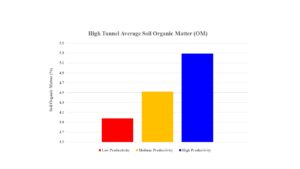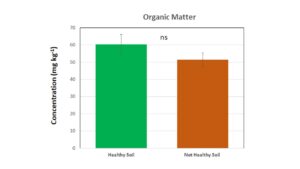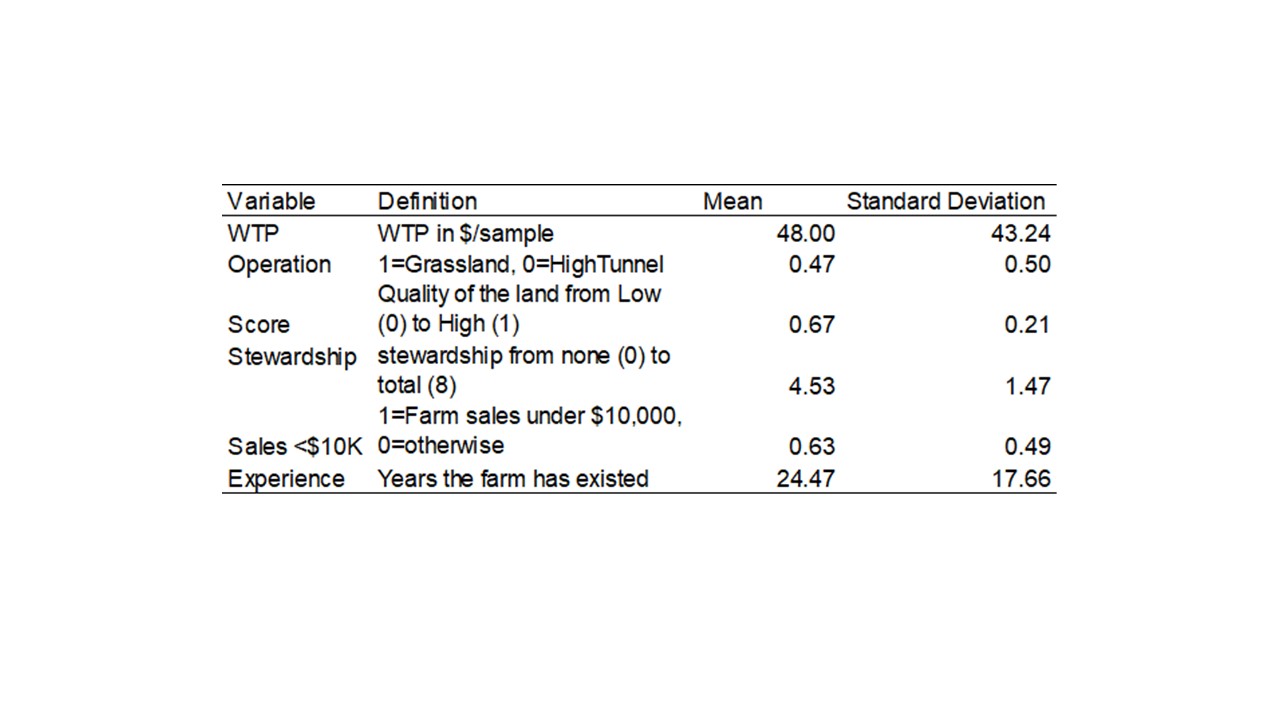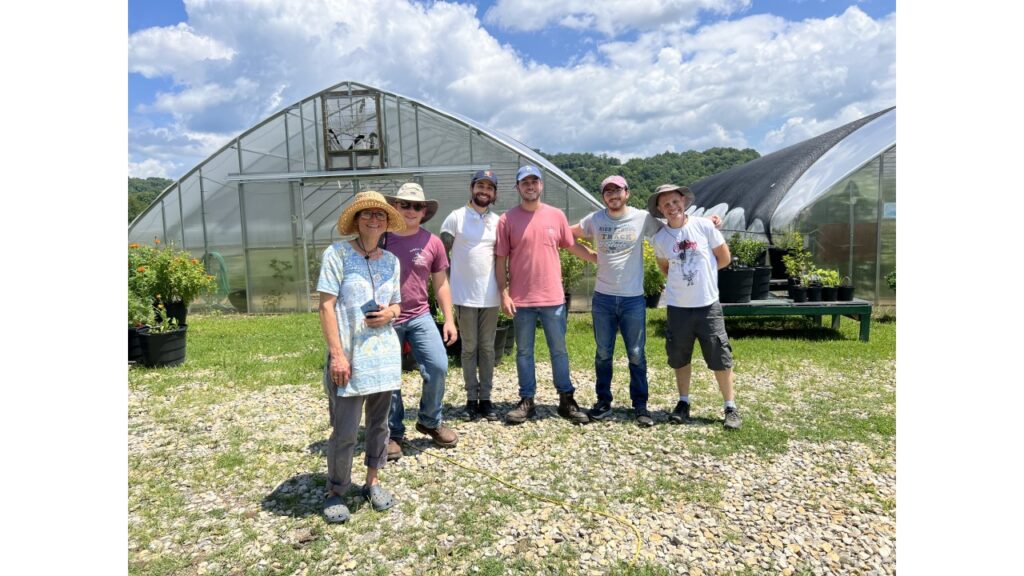Final report for LNE21-420
Project Information
Problem and Justification: Soil health (SH) emerged from the recognition that soil is a dynamic and complex environment harboring multiple functions. For small-scale farmers, adopting practices known to improve SH was hindered by the expense of laboratory soil tests that provided quantitative measures of SH potentially related to productivity. The suite of approved and proposed SH measures offered through routine laboratory tests had not been fully examined for their value to, or potential adoption by, small farmers.
Solution and Approach: This project followed an iterative and participatory three-stage approach to increase SH adoption, integrating field and laboratory research, economic assessment, and education. Team members identified and engaged 30 participating farmers representing two key Appalachian region land uses in West Virginia: high tunnel production (USDA-defined specialty crop) and managed grasslands (hay/pastures). In Stage 1: Farmers were identified in collaboration with the WVU Soil Testing Lab and WVU extension agents. Soil samples were collected from their farms, focusing on SH variables suitable for laboratory determination. A field-to-lab approach was applied to identify the most responsive biological (e.g., respiration, enzyme activity), chemical (e.g., nutrients), and physical (e.g., aggregation) methods for distinguishing categorical SH levels (low, medium, good) linked to land-use productivity. Correlation analyses confirmed relationships between SH test results and land-use productivity, generating preliminary management recommendations. These correlations were based on biomass yield measurements in grasslands, productivity assessments in high tunnels, and farmer-provided indigenous/local productivity knowledge. A short-term evaluation was conducted to assess farmers' perceived benefits of SH testing, and surveys were used to gauge interest and potential adoption by additional farmers. Stage 2: Cost optimization for the best SH tests previously identified was used to select the best combination of analyses (price/efficiency/farmer approval) for Appalachian farmers. The project refined and optimized a cost-effective SH test suite, identifying a combination of the most effective and affordable SH indicators. Based on laboratory analysis and farmer feedback, a cost-efficient test package was designed, priced at less than $35 for WV landowners (due to WV subsidies for routine analyses) and under $45 for farmers in other Appalachian states. Stage 3: For the methods selected in Stage 2, and to facilitate farmer adoption, field soil sampling and sample submission methods were standardized, and a Do-It-Yourself (DIY) sampling kit was developed for the Appalachian region. Early farmer participants provided critical feedback on the practicality of these sampling methods. The project team, in collaboration with WVU extension agents, also developed educational materials to assist farmers in understanding the how, when, and where of effective SH sampling, interpreting lab reports, and recognizing the economic and environmental benefits of improved SH management. While the original plan included producing educational videos, the primary focus shifted to direct farmer engagement through workshops and extension training, ensuring that farmers and extension agents could apply SH test results effectively. Early adopters demonstrated the effectiveness of improved SH management, helping stimulate broader adoption of SH testing and soil health-based management practices.
At project’s end we expect that lower soil health test costs will motivate 100 farmers/year (in WV and other neighboring Appalachian States) to adopt the New WV Appalachian Soil Health Test for 25/year high tunnels and 1000 grassland acres, repeating the test every two to three years and implementing recommended management/conservation practices (organic materials amendment, rotational grazing) and causing a 20% improvement in later measures of one or more soil health indicators.
Soil health was recognized as the outgrowth of understanding that soil is a dynamic and complex environment harboring multiple functions. For small-scale farmers, adopting practices known to improve soil health was hindered by the expense of laboratory soil tests that provided quantitative measures of soil health potentially related to productivity. The suite of approved and proposed soil health measures offered through routine laboratory tests had not been fully examined for their value to, and potential adoption by, small farmers. This project implemented an iterative and participative three-stage approach to increase soil health adoption, relying on field and laboratory research, economic assessment, and education. The project team identified 30 participating farmers representing two key Appalachian region land uses in West Virginia: high tunnel production (USDA-defined specialty crop) and managed grasslands (hay/pastures). Stage 1 focused on farmer identification, conducted in collaboration with the WVU Soil Testing Lab and WVU extension agents. Soil samples were collected from participating farms, targeting soil health variables suitable for laboratory determination. A field-to-lab approach was applied to identify the most responsive biological (respiration, enzyme activity), chemical (nutrients), and physical (aggregation) methods for distinguishing categorical soil health levels (poor, good, excellent) related to land-use productivity. Correlation analyses confirmed relationships between soil health test results and productivity in chosen land uses, generating preliminary management recommendations. These correlations were based on yield measurements for common crops in high tunnels and grasslands and farmer-provided indigenous/local productivity knowledge. A short-term evaluation assessed farmers' perceived benefits of soil health testing, and surveys gauged interest and potential adoption by additional farmers. Stage 2 optimized the cost-effectiveness of the most relevant soil health tests, selecting the best combination of analyses based on price, efficiency, and farmer approval. The final suite of tests was priced at less than $35 for WV landowners (due to partial WV subsidies for routine analyses) and under $45 for farmers in other Appalachian states. Stage 3 focused on the development of standardized field soil sampling and submission methods, culminating in a Do-It-Yourself (DIY) sampling kit for the Appalachian region. Early farmer participants provided feedback on its practicality, and the project team, in collaboration with WVU extension agents, developed educational materials to help farmers understand how, when, and where to effectively sample soil, interpret lab reports, and implement recommended soil health management practices. While the original plan included educational videos, the primary focus shifted to direct farmer engagement through workshops and extension training, ensuring that farmers and extension agents could apply soil health test results effectively. Early adopters demonstrated the effectiveness of improved soil health management, helping to stimulate broader adoption of soil health testing and soil health-based management practices.
Cooperators
- (Educator and Researcher)
- (Educator and Researcher)
- (Educator and Researcher)
- (Educator)
Research
Hypothesis from Approved Proposal:
Making soil health testing affordable to small farmers in WV and the Appalachian Region will increase adoption of conservation practices that promote sustainable agricultural production. Can a cost-effective suite of laboratory soil health measures for the region’s soils/plant production systems, measures that will be diagnostic of current and changing soil health, be found and correlated to productivity in order to accomplish this goal? Research based educational materials, produced in an iterative fashion with the collaboration of farmers and extension agents, will increase the adoption of the new laboratory SH test suite.
Final Year 2024 Update:
Making soil health testing more affordable for small farmers in West Virginia and the Appalachian region will enhance the adoption of conservation practices that support sustainable agricultural production. By developing a cost-effective suite of laboratory soil health measures tailored to the region’s soils and production systems, we aim to provide diagnostic tools that assess both current soil health and changes over time, linking these measures to productivity. Research-based educational materials, developed collaboratively with farmers and extension agents, will further drive the adoption of the new laboratory soil health testing suite.
Intermediate Year 2022-2023 Update:
The hypothesis we formulated for the project remains a guiding force for our research and educational objectives. We are actively engaged in processing data from over 400 soil samples to rigorously test this hypothesis. Initial analyses of specific properties have already been concluded for a subset of 250 samples collected from 26 farms. Additionally, presentations have been delivered to extension agents in both the State of West Virginia and Massachusetts.
Intermediate Year 2021-2022 Update:
The hypothesis we proposed for the project continues to drive our proposed research and education goals. We are processing data to test the hypothesis. Preliminary analysis has been completed in a set of 150 samples sampled on 26 farms.
Materials and methods:
The project was conducted in the Appalachian Region of West Virginia, in collaboration with research and extension faculty from West Virginia University (WVU) and the University of Kentucky. Farmer participation played a critical role in shaping the study, with 20 to 50 producers from ten counties in West Virginia initially identified as potential early adopters. Although seven farmers withdrew from the project over time, additional participants were recruited, ensuring continued engagement throughout the study.
The study focused on benchmark soils of the Appalachian Plateau Physiographic Region, specifically the Tilsit, Gilpin, and Berks soil series, which were selected due to their prevalence and agricultural significance in the region. These soils served as the foundation for analyzing soil health differences across diverse production systems and management practices
The research objectives were:
Objective 1): Identify laboratory SH indicators and develop a production system- specific Soil Health Test (laboratory SH measurement suite).
Objective 2): Establish sampling protocols for selected SH indicators and develop a standardized sampling kit.
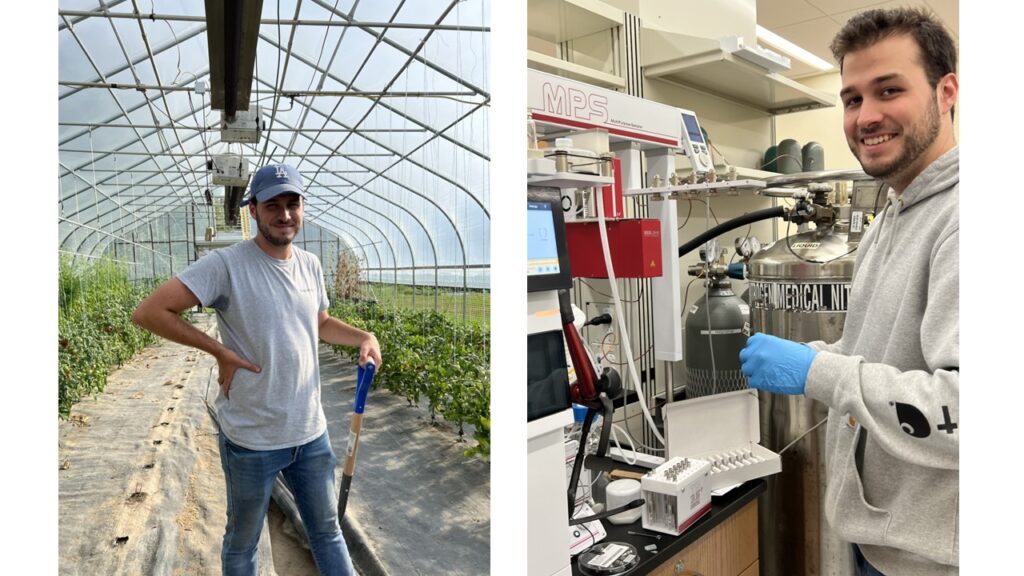
Research Components and Study Design:
The research was structured into three major components, each designed to address different aspects of soil health assessment and management:
- Field and Laboratory Research, which focused on identifying soil health indicators and developing a production system-specific Soil Health Test. The goal was to select the most reliable soil health measurements based on laboratory analysis and field conditions.
- Field Correlation Research, which assessed the relationship between laboratory-measured soil health indicators and field productivity. The objective was to validate whether soil health properties corresponded with observed crop performance and farmer-defined soil health perceptions.
- Economic Research, which evaluated the cost-effectiveness of soil health testing for small Appalachian farms and estimated farmers' willingness to pay (WTP) for soil health assessments.
I. Treatments:
To systematically analyze soil health across different conditions, a factorial experimental design was used. This approach accounted for three common WV production systems, soil productivity levels, sampling depth, and submission method, resulting in 27 treatment combinations:
- Three Production Systems: Managed grasslands (hay or grazing) and high tunnels.
- Three Productivity Levels: Farmer-defined soil productivity zones categorized as low (unhealthy/low productivity), medium (transitional), or high (healthy/high productivity).
- Three Sampling Depths: Soil was sampled at 0–2 inches, 2–4 inches, and 4–6 inches.
- One Submission Method: A standardized direct submission method was used after testing revealed that conventional shipping methods compromised soil aggregation and respiration analysis.
These treatment combinations allowed for a structured comparison of soil health properties while incorporating farmer knowledge and field observations.
Rationale for factor selection:
- Representativeness and significance of selected production systems (high tunnels and grasslands), as soil properties are management-dependent.
- The need to correlate soil health with productivity levels (high = healthy, low = unhealthy, medium = transitional).
- The influence of soil depth on soil health properties, requiring a standardized sampling depth (0-2, 2-4, 4-6 inches).
- Limitations posed by shipping, which impact laboratory analyses of soil aggregation and respiration.
II. Field and Laboratory Analysis Methods:
The soil sampling process was conducted in summer and fall, with samples stratified by depth to capture variability in soil health properties. Farmers played an active role in identifying sampling locations, selecting sites based on their knowledge of productivity variations across their fields.
The following indicators were analyzed:
- Physical properties, including texture, wet aggregation (MWD/GMD), and available water retention, were measured to assess soil structure and resilience.
- Chemical properties, such as pH, electrical conductivity, organic matter content, and macronutrient levels (P, K, Ca, Mg), provided insights into soil fertility and potential imbalances.
- Biological properties, including POxC, dehydrogenase activity, mineralizable nitrogen, soil respiration, and plant species diversity, were used to evaluate microbial function and soil health stability.
Statistical analyses, including ANOVA, regression modeling, logistic regression, and correlation analyses, were conducted to determine the significance of production systems, productivity levels, and sampling depths in shaping soil health. The results guided the selection of robust soil health indicators for the WVU Soil Health Test.
III. Farmer Input:
Since 2019 informal phone surveys have been conducted by the WVU Soil Testing Laboratory. Farmers ask about postage and SH testing costs; soil sampling instructions, and about resulting recommendations. During the farm/field identification and sampling process, we will rely on participating farmers’ indigenous knowledge as representative samples from high-tunnel/field locations regarded as low, medium, or good in productivity are taken and returned to the WVU Soil Test Laboratory. Producers will also be asked to collect/provide relevant yield and/or other productivity data.
Additionally, farmer feedback will be used when developing the new WVU Soil Health soil test report.
Field Correlation Research
The field correlation study aimed to link soil health indicators with productivity outcomes and develop science-based recommendations for improving soil health.
To achieve this, farmers classified their fields into low, medium, or high productivity zones, using their observations and historical yield data. These classifications were compared with laboratory soil health assessments to determine the validity of farmer-defined soil health levels.
We can summarize the objectives of this analysis as:
Objective 1): Use correlation analysis to select among laboratory SH measurements previously listed for those better related to high-tunnel and grassland productivity. This may include correlation with qualitative, indigenous (soil health status) measures of productivity.
Objective 2): Develop preliminary recommendations linking laboratory SH measures with best management practices, using both experimental and literature-based data. Recommended practices may include cover cropping, tillage reduction or cessation, organic matter additions, crop rotation strategies, and grassland management options.
a) Procedures:
Productivity Assessment and Correlation Analysis
The study employed two primary methods to evaluate soil productivity:
- High tunnel productivity was evaluated through farmers' qualitative assessments of crop performance or soil health level (indigenous knowledge), given the challenges of measuring diverse vegetable yields.
- Grassland productivity through farmers' qualitative assessments of crop performance or soil health level (indigenous knowledge), biomass production, and species diversity, with dry matter yields measured in the field.
Correlation, ANOVA, and logistic regression analysis were used to determine the relationship between soil health indicators and “qualitative productivity or soil health level”. Regression models assessed the impact of production system and soil depth on soil health trends, while surrogate variables were tested to identify cost-effective alternatives to expensive biological soil tests.
Indigenous knowledge and soil health level:
Field/high-tunnel sampling sites are assigned, via indigenous knowledge or field measurement, as either low (unhealthy), medium, or high productivity (healthy) status. Indigenous knowledge comes from the cooperating farmer/grower.
Field measurements of productivity will include biomass/botanical composition to determine the dry matter production of desirable species in grassland systems and farmers' descriptions of horticultural crop performance under high-tunnel production. In the absence of field production measurements, qualitative indigenous assignments will become the response variate correlated with the laboratory SH measurements – this may be especially important in plant-species-diverse high tunnel systems. The rationale for this approach to determining productivity level is that the farmer/grower’s experience is sufficient to make the assignment. The assumption that these sampled areas will have correspondingly low or unhealthy, medium, and high or healthy SH is hypothesized and subject to the outcome of the correlation analysis.
b) Correlation Analysis Methods:
Correlation analysis is determining the relationship, if any, between y, the response variable (productivity measured or assigned), and the x variable (laboratory SH measurement). All laboratory SH tests (listed earlier) would be evaluated to determine those SH measures most responsive/sensitive, and best able to predict productivity.
Combinations of laboratory SH tests would also be examined. The data would be divided according to the production system and, perhaps, sampling season. Chosen laboratory SH measures will be subject to the economic analysis described below.
c) Data Collected:
Data collected for this research component/analysis are the productivity information/data as related to each sample location, and the SH measurements (Physical soil health indicators (texture, wet aggregation (MWD/GMD), and available water retention); Chemical soil health indicators (pH, electrical conductivity, organic matter content, and macronutrient levels (P, K, Ca, Mg)); Biological soil health indicators (POxC, dehydrogenase activity, mineralizable nitrogen, soil respiration, and plant species diversity)).
Economic Research:
Objective 1) Use data from the proposed laboratory SH test analyses (Table 1) to identify a cost-efficient suite of SH measures for small Appalachian farms.
Objective 2) Estimate farmer willingness to pay (WTP) for SH testing/adoption.
a) Study Population(s): 20-50 small Appalachian farms with grassland and high-tunnel b) Methods:
According to producer theory, farmers face a profit maximization problem: they need to maximize revenues and/or reduce costs to attain higher profits. Our economic objectives contribute to farmer profit maximization problems in two ways: 1) devising a cost-efficient SH test and 2) determining farmer WTP for SH testing. WTP can be determined using farmer information on how much they would spend on a soil test (i.e. stated preference methods).
b) Data Collection and Analysis:
A nonparametric approach is used to determine the most cost-efficient SH test suite (i.e. group of tests with highest explanatory power at lowest possible cost). This approach minimizes the cost of an SH test of an explanatory power, given input cost (i.e. input price times quantity). Inputs considered include labor, laboratory facilities/equipment, turn-around time, and chemicals (Model 1 Supplemental File). The approach ranks SH test combinations from most to least efficient. Results will cause identification of soil test combinations, minimizing testing costs while ensuring representativity. This determines the most cost-efficient SH test that can be supplied.
Next we determine farmer WTP (i.e. demand). WTP for SH testing is estimated using a contingent valuation model (CVM) and data collected from farmer surveys (Model 2 Supplemental File). Information on WTP estimated from surveys at the project start will aid in choosing a cost-efficient SH test. At project’s end we overcome a criticism of CVM, that respondents may overstate their WTP due to biases, by investigating whether farmers will buy the SH test at the price we determined.
d) Farmer Input:
Farmers will participate in: a) responding to surveys at project beginning and end; b) allowing soil sampling on their farms; and c) providing feedback on test costs and recommended practices. Farmer input may help identify subsidy amounts needed to motivate small farm adoption of SH testing.
Adjustments and Refinements from 2021-2024:
2021–2022: Initial Study Design Implementation
During the first year, the project followed the proposed experimental design, and no major changes were made to the methodology.
2022–2023: Refinements Based on Early Results
As data analysis progressed, adjustments were made to enhance the accuracy and relevance of soil health assessments. Key refinements included:
Soil stratification by depth was introduced as a variable after findings demonstrated significant depth-dependent variations in soil health indicators.
Conventional shipping methods were discontinued due to sample degradation that compromised laboratory analyses of soil aggregation and respiration.
Preliminary correlation analysis revealed that farmer-defined soil health levels aligned well with laboratory assessments, validating the role of farmer input in soil health evaluation.
2023–2024: Final Adjustments and Methodological Refinements
The finalized experimental design retained 27 treatment combinations, integrating three production systems, three productivity levels, and three sampling depths. Seasonal sampling was deprioritized after statistical analysis showed that most soil health indicators exhibited minimal seasonal variation.
Additionally, the economic analysis refined the cost structure of soil health tests, confirming that a $35–$45 test suite was optimal for Appalachian farmers.
Year 2022: Initial Soil Health Assessments & Farmer Collaboration
Field Sampling & Farmer Participation
The project successfully sampled 26 out of 30 farms in 2022, with data collected from 150 soil samples.
Farmer collaboration was critical in selecting sample sites based on perceived soil productivity levels (high, medium, low). Figure 1 (2022). provides examples of sites visited, including high tunnels and grasslands.
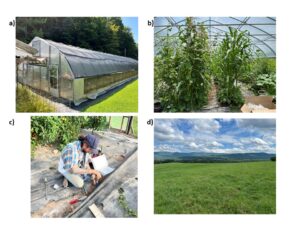
Preliminary Soil Health Findings
The hypothesis we proposed for the project continues to drive our proposed research and education goals. We are processing data to test the hypothesis. Preliminary analysis has been completed on a set of 150 samples taken on 26 farms. Statistical analyses (ANOVA, regression, and correlation analyses) were conducted to compare soil health indicators across different management systems (high tunnel vs. grassland) and soil depths.
Key observations 2022:
- Soil aggregation (Mean Weight Diameter, MWD) was significantly affected by the management system. Grasslands had significantly better soil aggregation (higher wet MWD/GMD, lower bulk density, and reduced aggregate loss) (p < 0.01) Figure 2a (2022).
- Bulk density differed by depth and productivity level (Figure 2b (2022)).
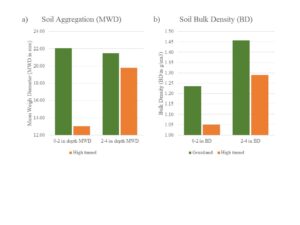
- The ongoing recognition of the soil health indicator's sensitivity and its correlation with the farmers' perception of soil health remains crucial for the success of this proposed methodology. In high tunnel production systems, Figure 3 (2022) illustrates that declining productivity, as perceived in unhealthy soils, corresponds to a decrease in soil organic content. This suggests that in high tunnels, organic matter serves as a reliable indicator of soil health.
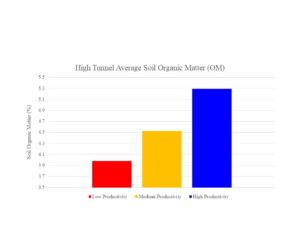
- The variations observed between production systems, manifesting as changes in the relationships between soil health indicators like organic matter and bulk density, underscore the importance of considering differences in production systems when recommending soil health tests. The statistically verified disparities in the two relationships between production systems are reflected in the regression coefficients: a stronger relationship (R2=0.83) between organic matter and bulk density when soil health/productivity was perceived to be high, compared to samples where soil health/productivity was perceived to be low (R2=0.66).The relationship between organic matter and bulk density was stronger in high-productivity soils (R² = 0.83) compared to low-productivity soils (R² = 0.66) (Figure 4 (2022), suggesting that farmer input enhances the precision of soil sampling strategies.
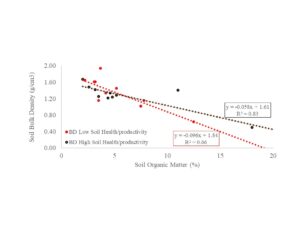
- The results discussed above indicate that farmer-defined soil health levels successfully separated sampled areas, validating their role in soil health assessment.
Farmer Surveys & Educational Engagement
- A farmer survey was developed and administered by trained students to gather input on soil health level perceptions. The activities required to create/complete the survey included zoom and face to face meetings between the PIs during Summer and Fall 2021 to discuss the survey. We also completed the student training to collect supplementary information to support the survey.
- The IRB classification process confirmed the survey as Not Human Subject Research (NHSR). The Research Compliance administration office concluded that: The activity described does not meet the HHS or FDA federal definition of "research" that requires IRB review, amendments and/or approvals. Our NHSR number is 2105323236, and it was deemed not requiring review on 06/02/2021. The protocol remains valid until 06/02/2026.
- The survey results highlighted farmer preferences for soil health indicators, particularly for assessing salinity risks and nutrient imbalances.
- Over half of the farms conduct annual soil testing yearly, with 22% reporting not testing at all. The type of operation seems to play a role in soil testing decisions. Grassland farmers mostly test using the free WVU testing, while high tunnel producers usually perform further tests (e.g. organic matter).
- Grassland farmers spend per sample less than high tunnel producers. On average, grassland operations spend on soil testing beyond the WVU routine tests, $0.67, while high tunnel operations spend $12 (Table 1 (2022)).
Table 1 (2022): Descriptive statistics on Grassland and High Tunnel Operations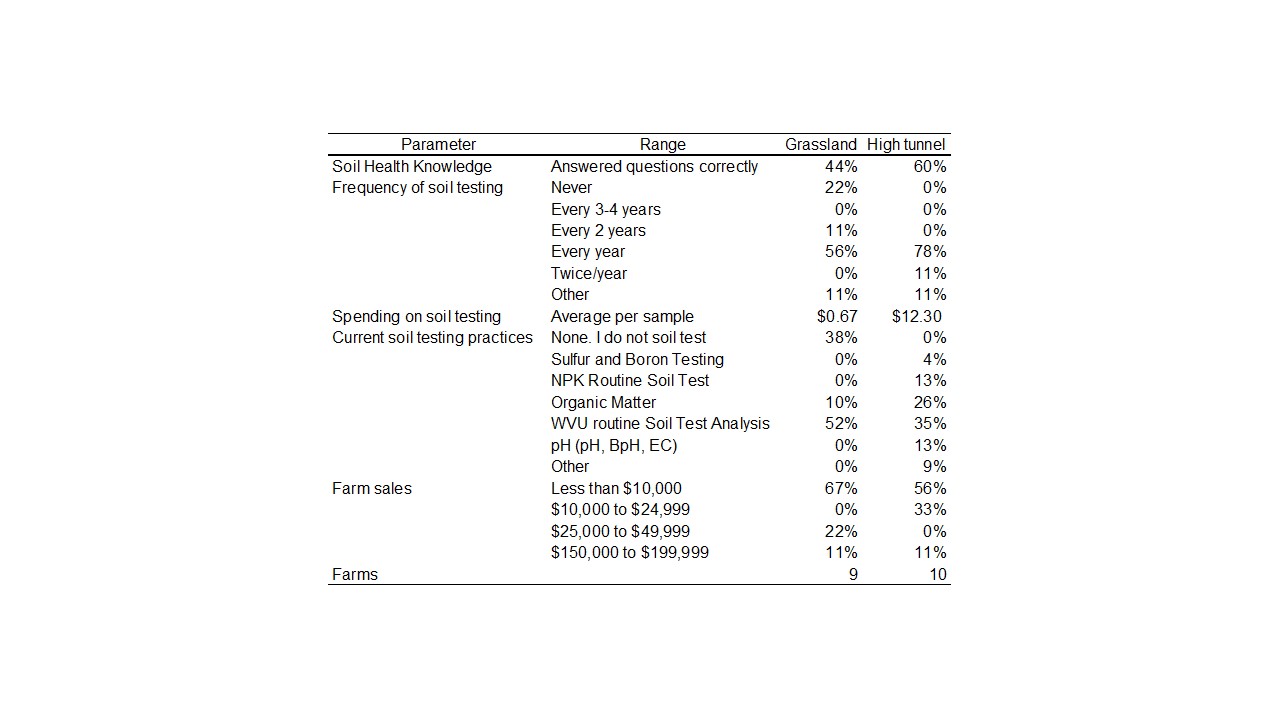
Year 2023: Expanded Data Collection & Method Refinements
Field Sampling & Laboratory Adjustments
- A total of 150 additional samples were collected, reinforcing findings from 2022. The project yielded results from farmer fields. We successfully visited and sampled 26 out of 30 farms. Figure 1 (2023) illustrates examples of visited sites and the corresponding sampling process.
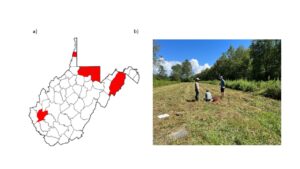
- Two new undergraduate students were trained for field sampling & lab processing.
Soil Health Indicator Comparisons
- Bulk density in grasslands was consistently higher than in high tunnels, regardless of soil depth or health perception (Figure 2 (2023)). The findings for these indicators at various soil depths provide valuable insights into the optimal depth for farmers to obtain soil samples, ensuring more accurate and useful results.
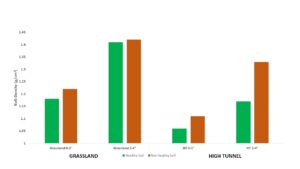
- Organic matter concentrations varied significantly by management system and farmer-defined soil health level (Figure 3 (2023)). Figure 4 (2023) illustrates the distinctions in high tunnel soil organic matter corresponding to each farmer-defined level of soil health/productivity (low, medium, high). This approach, utilizing farmer/indigenous knowledge, is proving to be effective and reliable.
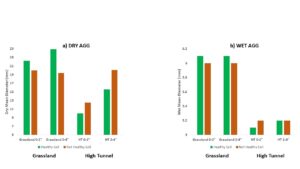
Figure 4 (2023). Concentration of organic matter (%) in high tunnel soils at each farmer defined level of soil health/productivity.
- If we were to recommend organic matter as a universal soil health indicator for samples not differentiated by production systems (grasslands vs. high tunnels), the relationship between soil health and organic matter content becomes less clear (Figure 5 (2023)). Although a higher organic matter content is observed in healthier soils, no statistically significant differences were recorded.
Figure 5-2023. Concentration in organic matter (mg kg-1) at the surface 0-4 inches in soil samples collected from grasslands and high tunnels.
Unexpected Results & Implications:
- Electrical conductivity (EC) did not correlate with the soil health level described by the farmers in high tunnels (Figure 6 (2023)). This raises the need for further testing to determine whether fertility levels influence EC variations. We suspect that fertility may be linked to EC, suggesting that lower fertility could be the underlying reason for this result. A test has been designed to explore this hypothesis. Figure 6 (2023) illustrates the relationship between soil health perception and EC, revealing significant differences between EC levels.
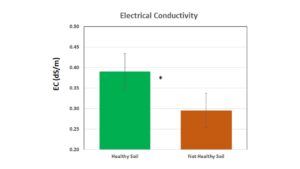
- Another crucial soil health indicator for assessing soil health levels is soil pH. In the samples from high tunnels, pH did not exhibit a clear relationship with soil health levels. However, variations in pH within the 0-8 inches were indeed correlated with the soil health level described by the farmer. Figure 7 (2023) a) demonstrates no difference when pH is measured an average value in the 0-8 inches, while b) reveals statistically significant differences when measuring the stratification or changes in pH within the 0-8 inches. We are currently working on determining how this sampling recommendation for assessing soil health will be communicated to the farmers.
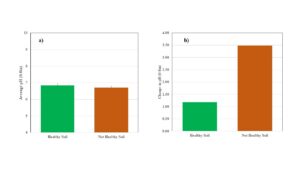
Willingness to Pay for the Affordable Soil Health Test for the Appalachian Region
There is a notable gap in the existing literature regarding the willingness to pay (WTP) for comprehensive soil health testing within the US agriculture setting. The success of establishing new soil testing services hinges, in part, upon the financial capacity of the farmers it aims to serve. Profitability emerges as a pivotal factor for farmers when considering the adoption of soil health-promoting practices (SHPPs), while the WTP for an agricultural service can be influenced by various socioeconomic and demographic variables.
Our preliminary data analysis stems from face-to-face surveys conducted by a team of five researchers. Farmers were provided with a Soil Health Score Card featuring 10 levels of soil health. They filled out the scorecard based on their perception, and a payment card was provided to select the maximum WTP. Figure 8 (2023) illustrates a graph summarizing the WTP in relation to the Soil Health Score. Initial results indicate a tendency for WTP to increase as the soil health score decreases (correlation coefficient is -0.20), underscoring the significance for farmers to be aware of and manage lower soil health levels. Although preliminary, these data show promise in assessing the potential adoption of soil health tests in the Appalachian Region.
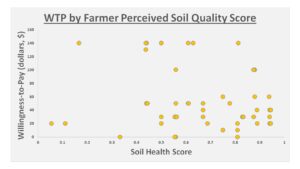
Willingness to Pay Key Findings:
- WTP for soil testing varies by perceived soil quality. WTP for soil testing on low-quality soils is higher than that on high-quality soils (Figure 9 (2023)). The farmer is likely expecting that improvements on low-quality soils will bring a higher marginal return than soil improvement on high-quality soils.
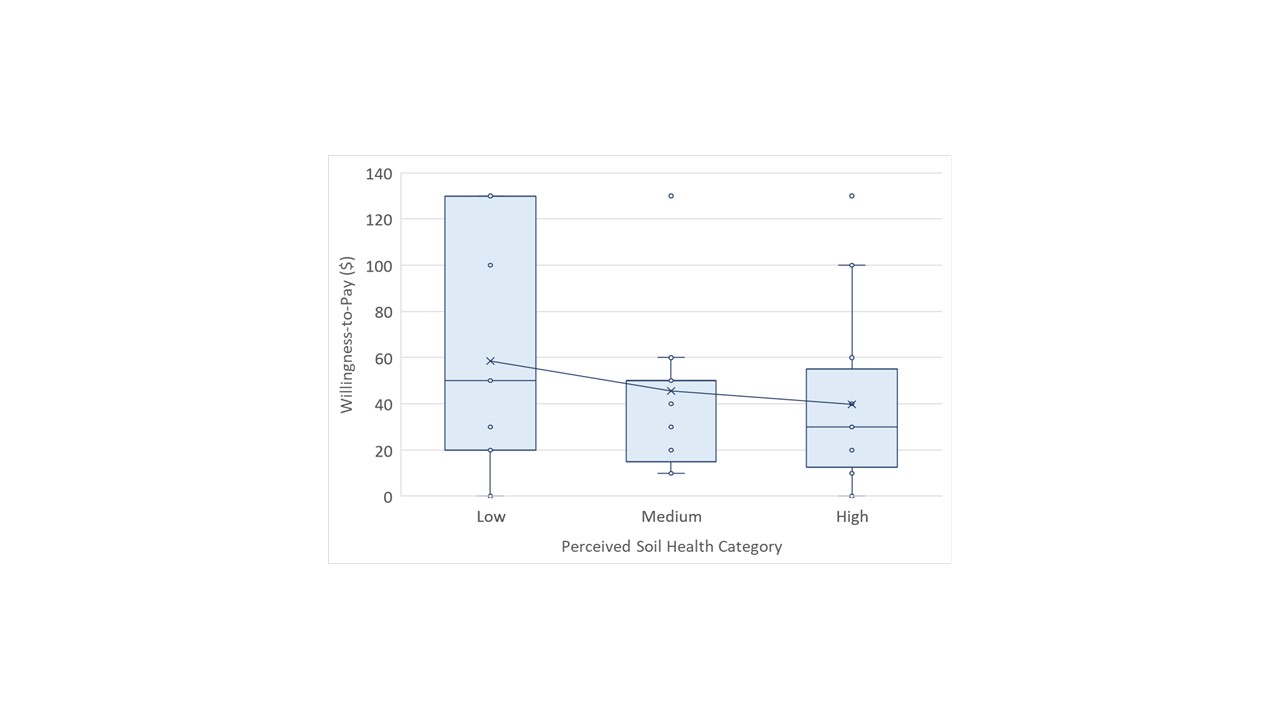
Farmer Input:
- The meetings conducted with non-participating farmers in 2021 to gather input on the experimental design proved to be extremely beneficial for the execution of the experiment in 2022.
- Unfortunately, we faced challenges in completing the expected education and communication components of the project due to several unexpected and extreme events.
- Responses from the survey designed in 2022 and conducted in both 2022 and 2023 were analyzed by Dr. Ana Claudia Sant’Anna (data presented above).
Year 2024: Finalized Analysis & Soil Health Recommendations
A defining aspect of this project was farmer participation in identifying productivity levels and selecting soil sampling sites. Without farmer involvement, this project could not have been developed or completed. Their knowledge and observations proved to be effective in validating soil health indicators.
The project has generated valuable insights into soil health across high tunnels and managed grasslands, providing a clearer understanding of soil responses to different management practices. A total of 427 samples were collected from 30 farms, offering a robust dataset for evaluating key soil health indicators. In 2024, we dedicated most of our efforts to the analyses of biological soil health indicators.
Key Findings:
Comprehensive Soil Health Trends
- Soil Health Differentiation by Management System: Managed grasslands exhibited greater stability in soil aggregation and organic matter content compared to high tunnel systems, which displayed more variability due to intensive management practices.
- Strongest Predictors of Soil Health: Among the tested indicators, organic matter and wet aggregate stability remained the most consistent predictors of soil health, reinforcing their use as a key diagnostic tool.
- Soil Health Trends Over Time: The comparison of 2022, 2023, and 2024 data highlights a progressive refinement in testing methods and an improved understanding of soil responses. Notably, the 2023 dataset showed that productivity zones, as identified by farmers, aligned more closely with laboratory soil health assessments, indicating a growing reliability of field-based evaluations.
- Stratification by Soil Depth: A significant effect of soil depth on soil health indicators was observed, particularly for microbial activity, organic carbon content, and nutrient stratification, reinforcing the need for depth-specific assessments in soil health evaluation.
- HT systems exhibited significantly higher pH, macronutrient concentrations (P, K, Ca, Mg, Na, B, Zn), and Total C compared to grasslands (p < 0.05).
- Grasslands had significantly better soil aggregation (higher wet MWD/GMD, lower bulk density, and reduced aggregate loss) (p < 0.01).
- Biological activity (CO₂ respiration) was influenced by the interaction of management and soil health level, with HTs showing lower CO₂ production under poor soil health conditions (p = 0.0661).
- Significant interactions were detected for aggregate stability, suggesting that HTs may promote soil degradation over time unless soil health interventions are implemented.
- Sensitivity to soil health indicators varies by production system, meaning the same assessment framework cannot be applied equally to HTs and grasslands due to differences in response magnitude and indicator relevance.
Economic Feasibility of Soil Testing
- Economic Feasibility of Testing: The finalized cost analysis confirms that a soil health test suite can be offered at under $35 per test for WV farmers and under $45 for Appalachian farmers, balancing affordability with diagnostic accuracy.
- Farmer participation in testing increased as pricing aligned with their willingness to pay.
- Expensive biological tests such as Mineralizable N, ACE Protein (enzyme analysis), and PoXC analyses, can be replaced with cheaper, commonly used soil testing methods such as Soil Organic Matter (SOM) while maintaining reliable assessments, reducing costs by more than 50% without compromising data integrity.
- Farmer-supported lab-based soil tests correlate strongly with lower-cost biological indicators (SOM), allowing for practical substitutions that reduce overall testing expenses.
- Farmers can optimize testing strategies by focusing on key soil functions, eliminating unnecessary tests while still making informed soil management decisions.
Farmer Engagement & Perceived Impact
A defining aspect of this project was farmer participation in identifying productivity levels and selecting soil sampling sites. Without farmer involvement, this project could not have been developed or completed. Their knowledge and observations proved to be effective in validating soil health indicators.
Key insights from farmer-reported data and feedback include:
- Bulk Density (0–4 inches): No significant difference was found between high and low-production grassland soils, though a slight trend suggested higher bulk density in lower-productivity soils (Figure 1 (2024)). Bulk Density (0–4 inches) across productivity levels. Although no significant difference was found, a slight trend suggests higher bulk density in lower-productivity soils.
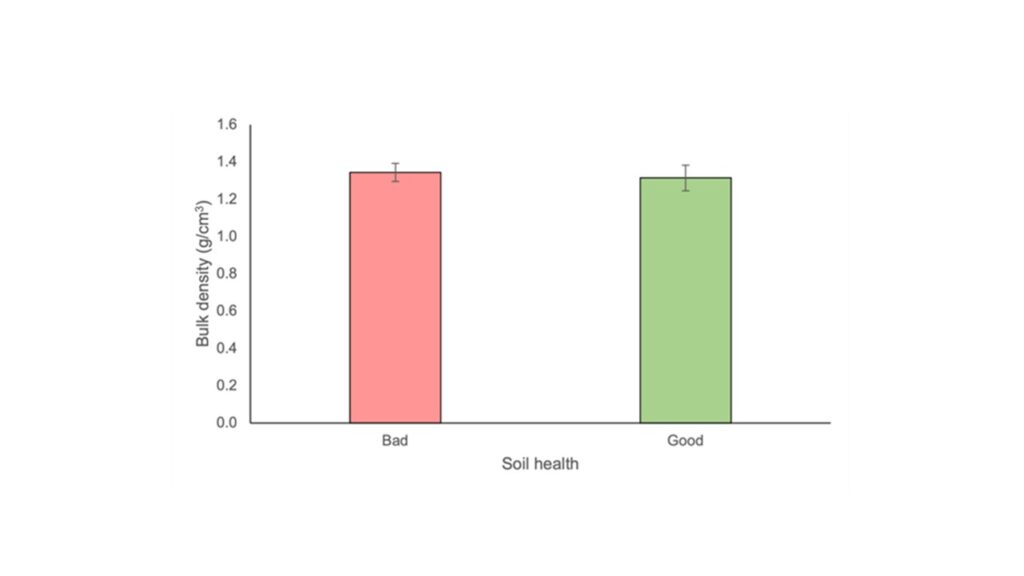
- Soil Productivity: Productivity was measured as biomass production in the grasslands: higher biomass yields were recorded in good soil health areas, confirming farmer observations of productivity differences (Figure 2 (2024)). Biomass productivity comparison in soils with varying health levels. Higher biomass yields were recorded in soils classified as having good health, aligning with farmer observations.
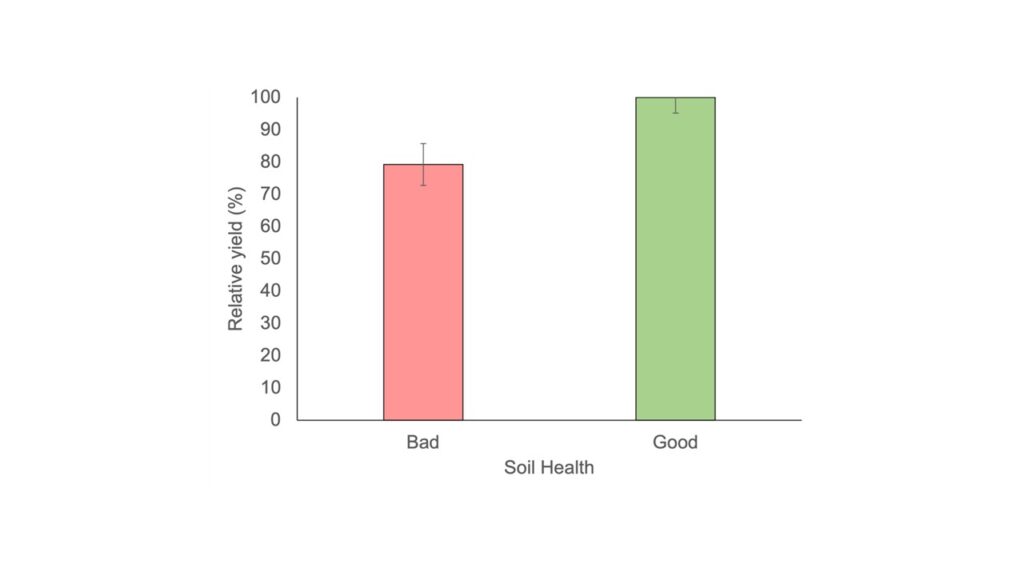
- Shannon Index & Species Diversity: The Shannon diversity index was significantly higher in productive soils, indicating greater plant diversity in healthier soils (Figure 3 (2024)). Shannon diversity index values in productive and unproductive soils. Greater plant diversity was observed in soils with better health indicators.
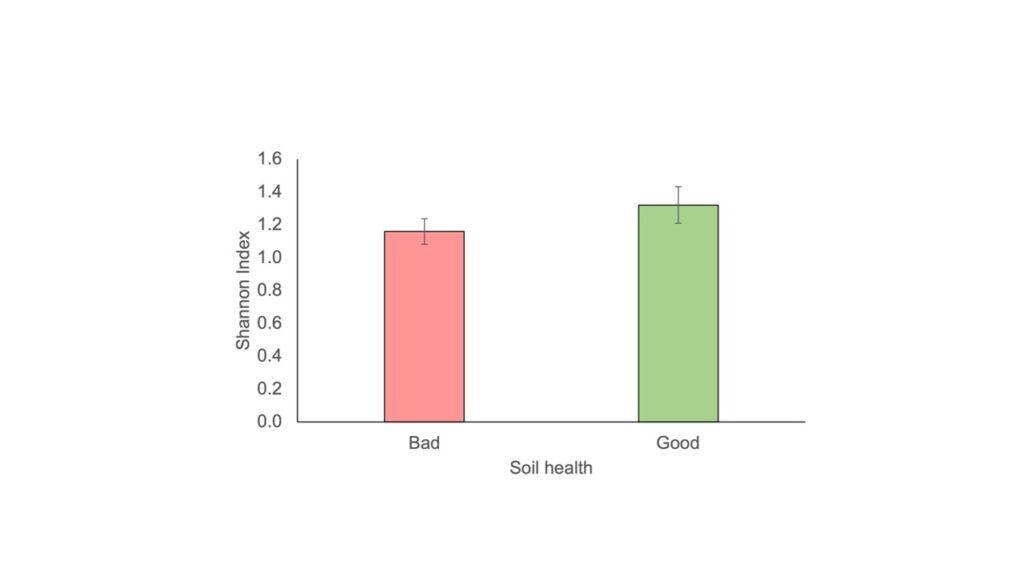
- Additionally, species composition differed between good and bad soils (Figure 4 (2024). Species composition differences between good and poor soil health zones. Healthier soils supported a more diverse plant community.).
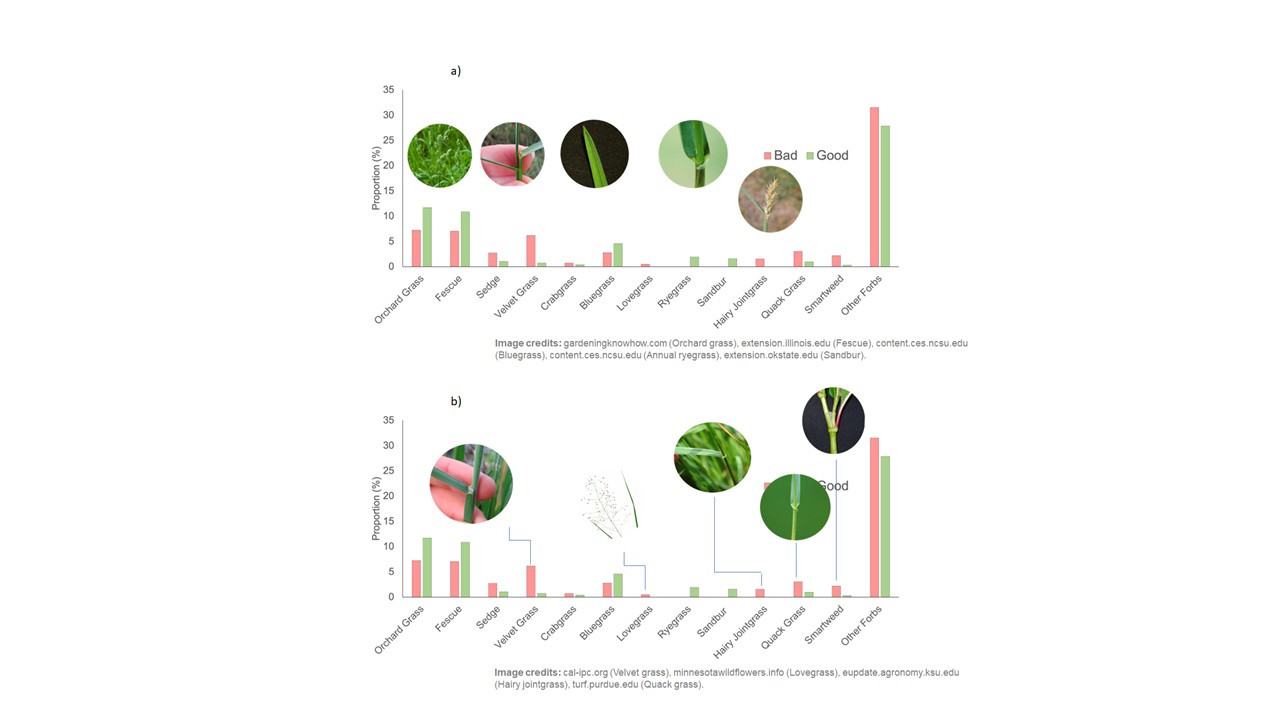
a) High-production, healthy soils (good)
b) Low-production, unhealthy soils (bad)
Key farmer-reported insights - Testimonials:
- “Now I understand why my lower fields behave differently—this test is useful for making decisions.”
- “If I can see the results improving over time, I know I’m doing the right thing. I’m committed to testing again next year.”
- “Soil health tests make conservation practices feel more like an investment than a guess.”
Statistical Analysis & Soil Health Indicators:
- Total Nitrogen & Organic Matter (LOI): Did not differentiate between the three soil health levels defined by farmers but were significantly higher in productive vs. unproductive soils.
- Soil Organic Carbon & POxC: Distinguished between grasslands and high tunnels, though not soil productivity levels.
- Mineralizable Nitrogen: Separated soil health levels as described by farmers, as well as production systems. Healthier soils had higher mineralizable N, and grasslands exhibited higher N mineralization than high tunnels.
- ACE Protein: Not sensitive to farmer-defined soil health levels and did not differentiate management systems.
- Wet Aggregation: Statistically stronger in grasslands than in high tunnels, reinforcing its importance in assessing soil structure and resilience.
Refining Soil Health Recommendations
- Findings suggest that organic matter alone is not a universal soil health indicator unless adjusted for the production system (grasslands vs. high tunnels).
- Optimized soil sampling protocols were developed based on depth-specific and management-specific variations.
- Timely fertility recommendations are recommended, particularly for high tunnel production systems, to prevent salinity buildup and keep “high productivity with no degradation (soil health).
Statistical Analysis and Farmer Willingness to Pay (WTP) Analysis:
- Summary statistics show that about half of the sample is composed of grassland and the other half of high tunnel. The average soil score is 0.67, which is about the medium level of quality and farmers’ WTP is on average $48 per sample, though it varies greatly in the sample. The majority of farms have sales under $10,000, and on average, they have existed for over 24 years (Table 1 (2024)).
Table 1 (2024): Summary statistics.
- Willingness to Pay (WTP) is heterogeneous across farms. Grassland operations, as well as, operations with less than $10K in sales are WTP less per sample than high tunnel or operations with greater sales. WTP goes down as the soil quality increases.
- The marginal effects for score was -67.76*** with a standard error of 8.034, indicating that a 0.1 increase in soil score of grassland farms with sales less than $10K, decreases WTP for soil testing by $6.78. The marginal effects for sales was -23.29*** with a standard error of 7.656, indicating that farms with sales less than $10K are WTP $23.29 less than those with higher sales.
- Findings highlight that the decision to conduct soil testing is a business decision. It is based on the farm revenues, operation type and expectation for profit increase due to changes in soil management practices.
- Farmers with lower soil health scores exhibited higher WTP for soil health testing.
- Targeted educational efforts can increase farmer investment in soil health assessments.
Educational Outreach & Adoption Strategy
To ensure long-term adoption, the project team has expanded its educational outreach efforts to include:
-
A comprehensive Soil Health Testing Toolkit, featuring updated sampling protocols.
-
Step-by-step guides to help farmers collect and submit reliable samples.
-
Interactive videos demonstrating soil health test procedures and result interpretation.
-
Extension training sessions designed to connect scientific findings with practical on-farm application.
These educational materials will be disseminated across multiple extension networks, ensuring that farmers across the Appalachian region have access to actionable soil health knowledge.
Conclusions & Next Steps
- With the integration of new data and farmer engagement strategies, this project has taken substantial strides in:
- Identifying key soil health indicators for high tunnels and grasslands. Refining cost-effective testing methods.
- Strengthening farmer participation and confidence in soil testing.
Moving forward, the next steps include:
- Expanding farmer participation to validate results across a wider range of landscapes.
- Optimizing test cost and efficiency to improve accessibility.
- Scaling up educational outreach to further drive soil health adoption and conservation practice implementation.
This project has laid a strong foundation for making soil health testing a standard, affordable, and action-driven tool for small-scale farmers in the Appalachian region.
2024 FINAL Report Research Conclusions
A comprehensive set of 427 soil samples from 30 farms was analyzed to test the project hypothesis, leading to several key findings.
Farmer-Identified Productivity Levels & Sampling Protocols
Farmers actively participated in identifying three productivity levels (high, medium, low) in their grassland and high tunnel production systems. Their classifications successfully distinguished soil health conditions, validated through measured soil health indicators. The data highlighted significant differences between high tunnels and grasslands, reinforcing the importance of tailored soil health assessments.
Key Soil Health Trends
- Soil Health Differentiation by Management System: Managed grasslands exhibited greater stability in soil aggregation and organic matter content, while high tunnels showed greater variability due to intensive management.
- Organic Matter & Aggregate Stability: These emerged as the most consistent and reliable indicators of soil health across different production systems.
- Stratification by Soil Depth: Depth significantly influenced microbial activity, organic carbon content, and nutrient distribution, reinforcing the need for depth-specific sampling recommendations.
- Soil Fertility in High Tunnels: pH, macronutrient concentrations (P, K, Ca, Mg, Na, B, Zn), and Total C were significantly higher in high tunnels than in grasslands (p < 0.05).
- Grasslands Showed Better Soil Structure: Grasslands had significantly higher wet aggregation, lower bulk density, and reduced aggregate loss (p < 0.01).
- Biological Activity (CO₂ Respiration): High tunnel soils had lower CO₂ production under poor soil health conditions (p = 0.0661).
- Soil Health Sensitivity Varies by System: Soil health indicators responded differently in grasslands and high tunnels, requiring system-specific assessment methods.
Soil Health Testing: Cost-Effectiveness & Practicality
- The most affordable and scientifically valid soil health test for Appalachian farmers consists of:
-
- Rapid Aggregation Test ($5) – A reliable indicator of soil structure.
- Organic Matter / Soil Organic Carbon ($6–10) – Key determinant of soil function.
- Routine Soil Analysis (P, K, pH) & Fertility Recommendations
- Farmer & Extension Training – To ensure meaningful use of test results.
- Expensive biological tests (e.g., Mineralizable N, ACE Protein, PoXC) did not provide significantly more useful insights than common indicators like soil organic matter.
- Willingness to Pay (WTP) for Testing: Farmers with lower soil health scores were more willing to pay for testing, suggesting targeted outreach could enhance adoption.
Why This Matters:
- Expensive tests did not provide significantly more useful information for guiding management decisions.
- This affordable testing method makes soil health assessment accessible to more farmers, increasing adoption and impact.
- Training farmers and extension agents in how to use soil test results effectively is just as important as testing itself.
Farmer Engagement & Perceived Impact
- Bulk Density & Productivity: No significant difference in bulk density between high and low-production grassland soils, but a trend toward higher bulk density in lower-productivity soils.
- Biomass Production Aligned with Soil Health: Higher biomass yields were observed in soils with better health indicators (p < 0.05).
- Shannon Diversity Index & Species Composition: More diverse plant communities were found in soils with better soil health.
- Farmer Testimonials:
"Now I understand why my lower fields behave differently—this test is useful for decision-making."
"Seeing improvements over time motivates me to continue soil health testing."
"Soil health tests help justify conservation practices as investments rather than guesses."
Future Research & Next Steps
- Expand validation of cost-effective soil health tests across different soil types and production systems.
- Strengthen recommendations for integrating biological soil health indicators into practical farm management.
- Develop farmer-friendly economic tools to assess the return on investment in soil testing.
- Enhance outreach through videos, illustrated guides, and annual soil health workshops.
This project has made substantial progress in refining cost-effective soil health assessments for small Appalachian farms. Continued research and investment will further enhance soil resilience, farm profitability, and environmental sustainability.
ADDITIONAL INFORMATION (Final Report):
Sampling Methods & Farmer Engagement
Sampling protocols were refined and expanded to include additional soil properties beyond those initially assessed in 2022. Farmers found these protocols easy to implement, strengthening their engagement with soil health testing. Surveys indicated sustained interest in soil health assessments and an appreciation for hands-on learning opportunities.
Farmer & Extension Agent Communication
Communication with farmers and extension agents has been effective, with feedback reflecting strong interest in soil health testing. Farmers emphasized that their engagement was driven by the ability of soil tests to provide actionable recommendations for improving soil productivity. This highlights the need for accessible soil health assessments with clear management implications.
Field Visits & Laboratory Analyses
COVID-related disruptions limited the number of new farm visits in 2023; however, laboratory analyses proceeded as planned, allowing the project to provide additional data to farmers. The results reinforced interest in the Appalachian Soil Health Test and facilitated further refinement of soil health indicators.
Correlation Analysis, Regression, ANOVA & Soil Health Indicators
Correlation analyses between soil health indicators and farmer-defined soil health levels confirmed that soil health responses vary across production systems. Aggregate stability emerged as the most consistently responsive indicator, applicable across both grassland and high tunnel systems. Further research is ongoing to refine surrogate variables for cost-effective laboratory assessments.
Challenges in Developing Soil Health-Based Recommendations
The complexity of interactions between production systems, soil health indicators, and management practices remains a challenge for developing definitive soil health recommendations. While full recommendations are still in progress, preliminary insights suggest that managing soil disturbance and adhering to fertility guidelines are key factors influencing soil health. The completion of remaining sample analyses will further refine best management practices.
At this stage, recommendations are still under development, including:
- Cover cropping
- Tillage reduction or cessation
- Organic matter additions
- Crop rotation strategies
- Grassland management options
The main immediate recommendation we can propose is managing soil disruption and following fertility recommendations, as these practices were recognized in our project as key determinants of soil health levels observed by farmers. The completion of all proposed sample analyses is necessary to finalize this objective
Farmer Willingness to Pay (WTP) for Soil Health Testing
Preliminary analysis indicates a strong correlation between farmers’ willingness to pay for soil health testing and their awareness of soil health issues. Farmers experiencing lower soil health levels expressed a higher willingness to invest in soil testing, reinforcing the need for continued education and outreach. The Most Affordable & Practical Soil Health Test for Appalachian Farmers.
Farmer & Extension Agent Communication:
Communication with farmers and extension agents has been smooth, with survey responses reflecting strong interest in soil health testing. Farmers have expressed that their interest is closely tied to the ability of soil health testing to provide actionable recommendations for improving production and yield. We anticipate no challenges in delivering relevant information to extension agents and farmers.
Future Research & Next Steps
While this project has made significant advances in soil health testing, economic feasibility, and farmer adoption, many key questions remain that warrant further research and funding:
- Refining & Expanding Soil Health Testing Strategies
- Validate the cost-effective soil health test across different soil types and production systems.
- Determine long-term soil health trends using this simplified testing approach.
- Bridging the Gap in Biological Soil Health Interpretation
- Develop clearer guidelines for integrating biological soil health indicators into farm management.
- Evaluate which biological tests offer the best cost-benefit balance for practical adoption.
- Strengthening the Economic Case for Soil Health Adoption
- Expand cost-benefit analysis to assess the long-term financial benefits of soil health improvements.
- Develop farmer-friendly economic tools to help assess the return on investment of soil testing.
- Scaling Up Farmer Outreach & Education
- Expand the Soil Health Workshop series into an annual event with more participation.
- Develop simple, accessible outreach materials (e.g., videos, illustrated handouts) to improve farmer engagement.
- Test different extension models to determine the most effective outreach strategies.
Reflections: Research is Ongoing, Not Complete
This project has provided important new insights into soil health testing, economic feasibility, and farmer adoption. However, the work is far from complete—there is still much to explore regarding the best ways to measure, interpret, and apply soil health indicators in real-world farm management.
Moving forward, we plan to:
- Pursue additional funding to expand soil health research and outreach.
- Strengthen collaborations with extension agents, researchers, and industry partners to refine soil health testing strategies.
- Build on the momentum of this project to develop practical, cost-effective solutions for improving soil health in the Appalachian region.
With continued research and investment, we can refine testing approaches, strengthen farmer adoption, and develop better strategies to improve soil resilience, farm profitability, and environmental sustainability.
Participation Summary (2022-2024):
- 2022: 26 farmers participated in research activities. An additional 15 farmers were identified but could not be visited and sampled.
- 2023: 27 farmers actively participated, with 15 additional farmers identified for future participation.
- 2024: 30 farmers actively participated, with 6 extension agents in WV and 1 extension agent in KY.
Intermedia 2022-2023 Research Conclusions
The research conducted in 2022 and 2023 laid the groundwork for understanding soil health dynamics across Appalachian grasslands and high tunnels. The findings reinforced the importance of farmer input, cost-efficient testing, and targeted management strategies.
Farmer-Identified Productivity Levels & Sampling Protocols
- Farmers selected three productivity levels (high, medium, low) in their grasslands and high tunnels, which successfully distinguished measured soil health conditions.
- Sampling protocols were tested for data quality and ease of implementation, leading to refinements for better farmer adoption.
Key Soil Health Findings (2022-2023)
- Soil Aggregation & Bulk Density: Grasslands had better soil aggregation and lower bulk density than high tunnels (p < 0.01).
- Organic Matter Content: Strongly associated with soil health in high tunnels, but less predictive across different production systems.
- Soil pH & EC in High Tunnels: No clear correlation with soil health level described by farmers. Further analysis needed to determine influencing factors.
Farmer Willingness to Pay (WTP) for Soil Testing
- Higher WTP was observed in farmers managing lower-quality soils, indicating a demand for soil health assessments in areas where degradation is evident.
- Economic analysis showed that high tunnel farmers were willing to invest more in testing than grassland farmers.
Challenges & Next Steps Identified in 2023
- Developing actionable soil health recommendations remained a challenge due to variability in responses across different systems.
- Correlation analyses helped identify surrogate soil health indicators that could reduce testing costs.
- Educational outreach and training were identified as crucial to encouraging adoption of soil health testing.
These foundational insights from 2022-2023 paved the way for the more refined soil health assessment methods and cost-effective testing strategies developed in 2024.
Education
Year 2022:
Research and education will be aligned with each other from the beginning of the work. When the proposal was written, we thought to focus on remotely delivered materials, given their advantage in allowing greater numbers of farmers to participate, and small field training groups. However, this approach may be modified since COVID conditions have changed. Presently, we participate in face-to-face meeting with farmers and county agents, but we will still be reaching more people using remotely delivered materials. Our education plan will follow the originally proposed three stages: 1) Soil health (SH) testing basics; 2) SH sampling and test result correlation; 3) SH result interpretation/recommended soil practices.
Since 2021, after a substantial delay in the project starting date due to an unexpected health problem affecting the team leader, substantial advances were made in 2022. We are in Stage 1 and simultaneously started Stage 2; supported by SARE’s grant and reputation, we have been having direct conversations with farmers and collaborators and are presenting our educational approach to smaller groups to get their support. We have received informal feedback, which we are using to improve our educational approach and materials.
For Stage 2, with the closest collaborators including the first group or "core farmer participants", we will be refining sampling procedures and making videos to be shared with future participants and clients.
We have collected, processed, and analyzed soil sample data, which is required to complete Stage 3. However, we need to perform scheduled year 2023 field sampling and analysis to complete this task.
Year 2023:
When the proposal was initially drafted, our focus was on remotely delivering materials due to the advantage of reaching a larger number of farmers and facilitating small field training groups. However, with the changing COVID conditions, farmers and extension agents expressed a preference for more face-to-face activities. We have actively participated in face-to-face meetings with farmers and county agents, delivering talks within and outside the state. Despite these in-person engagements, we recognize the continued effectiveness of reaching a broader audience through remotely delivered materials.
Our education plan adheres to the originally proposed three stages:
- Soil Health (SH) testing basics;
- SH sampling and test result correlation;
- SH result interpretation/recommended soil practices.
Stage 1, focusing on Soil Health testing basics, is currently ongoing and has been very successful.
Following a significant delay in 2021 due to an unexpected emergency, major surgery underwent by the team leader, considerable progress was made in 2022. Stage 1 is 80% complete, and simultaneously, Stage 2, which is over 60% completed, has begun. With the support of SARE, we have conducted and continue to conduct presentations and engage in discussions with interested farmers and extension agents. Our educational approach is being presented to smaller groups to garner their support. The questions and suggestions received have been instrumental in refining our educational approach and materials.
For Stage 2, which has expanded to include groups beyond the closest collaborators, including the first group or "core farmer participants," we are refining sampling procedures and creating videos to be shared with future participants and clients.
We have processed and analyzed 70% of the soil sample data, a crucial step in completing Stage 3. However, the completion of this stage requires the scheduled field sampling and analysis for the year 2023.
Year 2024:
The educational component of this project was designed to integrate soil health research and practical applications into both formal academic curricula and extension outreach. Over the course of the project, we implemented an interactive, hands-on approach that engaged students, extension agents, and farmers, ensuring that soil health principles were not only taught but also applied in real-world contexts.
Soil Health in Academic Curricula
One of the most significant educational outcomes of this project was the development and official inclusion of a Soil Health course into the curricula of two academic programs:
- Horticulture
- Environmental Soil and Water Sciences
The course, inspired and supported by experiences from this grant, was designed to be highly interactive and was successfully taught for the first time in Fall 2024. Its approval and integration took nearly a year, reflecting the rigorous process required to establish a new course.
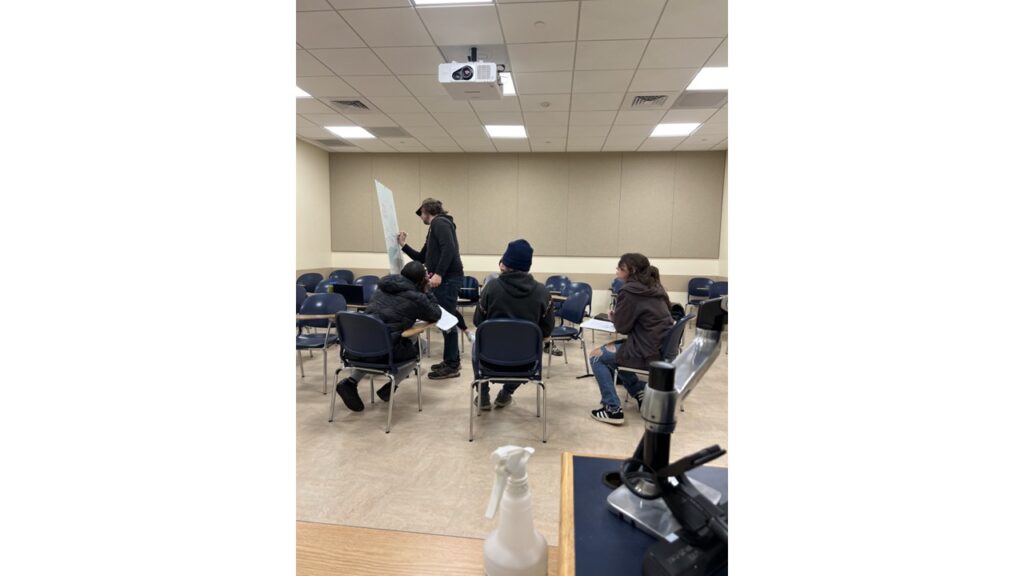
Additionally, soil health concepts developed through this project were incorporated into guest lectures across disciplines, including:
- Landscape Architecture
- Horticulture
These efforts have expanded the reach of soil health education, positioning it as a key pillar in sustainable land management practices across different fields of study.
Field Training and Workshops
A major focus of the educational approach was direct engagement with students and extension professionals through field training. This was achieved through:
- Training in Species Separation in Grasslands – Led by the grant proposal team under Dr. Domingo Mata, eight students were trained in species separation techniques, a crucial skill for understanding grassland ecology and its relationship to soil health. This training was enhanced by the active participation of extension agents, ensuring knowledge transfer beyond the classroom.
- First Soil Health Workshop at WVU and WV (December 12, 2024) – Organized as a key milestone in the project, this workshop brought together 20 extension agents and 2 farmers, fostering dialogue and hands-on learning. The workshop focused on practical soil health assessment, best management practices, and emerging trends in soil sustainability.
Extension and Outreach
The project extended its impact beyond academia through regional workshops, extension talks, and collaborations with stakeholders. Key outreach activities included:
- Dr. John Grove (University of Kentucky) led multiple outreach efforts, including:
- December 12–13, 2024 – Gave two talks at the First WVU Soil Health Workshop, engaging a total of 43 extension educators and farmers.
- February 21, 2024 – Delivered two presentations on cover crops and soil health at a meeting of the Boyle County, Kentucky, Soil Conservation District (audience: 86).
- September 26, 2024 – Spoke on soil health and nutrient cycles in grasslands at the Intermediate Grazing School in Versailles, Kentucky (audience: 52).
- October 14, 2024 – Guest lecture on soil health and crop rotation diversity in PLS/SAG 386, Plant Production Systems at the University of Kentucky (audience: 19).
- November 9, 2024 – Presented on regenerative agriculture and soil health at the Sierra Club-Kentucky annual planning meeting (audience: 104).
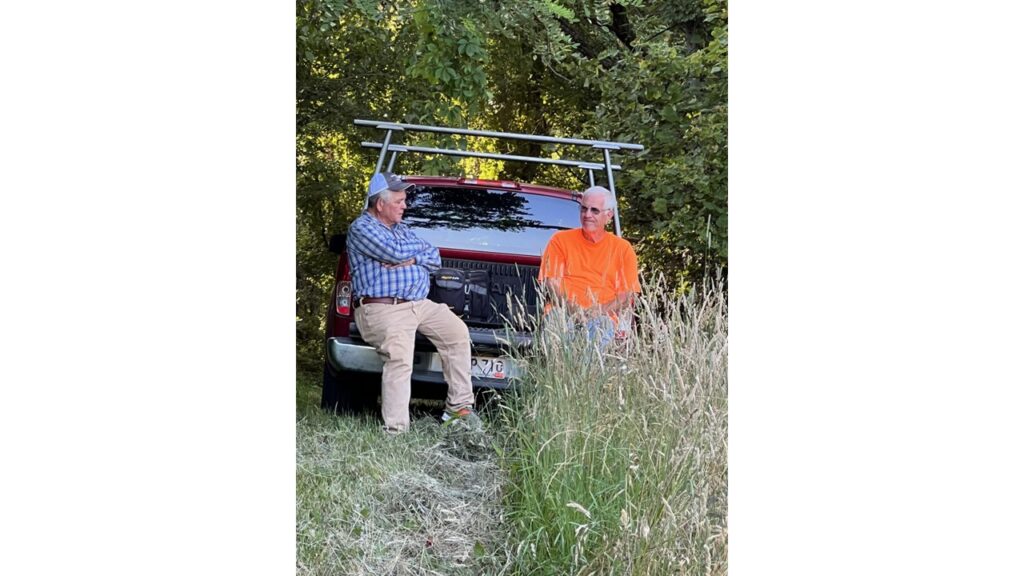
Research Integration and Data-Driven Learning
To support Stage 3 (Soil Health Result Interpretation and Recommended Practices), we ensured that real soil health data was used as a learning tool.
- Soil sample analyses were conducted in collaboration with Oregon State University and the University of Kentucky, reinforcing QA/QC standards and ensuring that soil health assessments were based on reliable data.
- These analyses formed the basis for educational demonstrations, allowing participants to interpret soil health indicators and apply findings to site-specific management decisions.
Remote Learning and Digital Content
While in-person engagement increased as COVID conditions improved, we continued to leverage remote learning resources to expand accessibility:
- Training videos and instructional materials were developed and shared with future farmer participants and clients.
- Online dissemination of soil health principles extended the reach of our findings beyond workshop attendees.
Conclusion
This project’s educational impact extended beyond the initial scope, fostering a multi-layered learning approach that combined:
- Formal academic coursework (Soil Health course integration).
- Hands-on student and extension training (species separation, workshops).
- Extension outreach and public engagement (talks across various agricultural and environmental sectors).
- Data-driven soil health education (real-world sample analysis and interpretation).
These efforts have established soil health education as a foundational component in multiple disciplines and outreach programs, ensuring a lasting impact on students, extension agents, and farmers alike.
Milestones
1- Farmer and extension agents will learn about the project and participate in development of a protocol for site and farmer selection
Start in June 2021.
5
1
5
2
July 15, 2021
Completed
March 15, 2022
Contacts with extension agents and farmers occurred between October 2021 and January 2022. Five (5) farmers/beneficiaries were selected and contacted with the help of extension agents and other researchers. Five (5) farmers confirmed participation and have been visited by the SARE grant team. We lost a project selected extension agent due to early retirement, but we were able to contact the Monongahela Conservation District to support our efforts. We did substitute this agent with another by the end of the year. The retired agent will continue collaborating with the project, due to the time already spent on the project.
Proposed New Completion Date: March 15th, 2022. The completion of the Milestone was achieved before the new proposed date.
2- Farmers (30) representing a range of high-tunnel growers and pasture farmers will be identified and “choose to participate” in project activities. Extension agents and the WVU Soil Testing Laboratory will collaborate to identify farmers by interest at the selected locations.
Start in June 2021.
30
1
26
3
July 30, 2021
Completed
March 30, 2022
In 2021 Milestone #2 was delayed due to unexpected health problems affecting the team leader. We pursued this commitment during the 2021 winter months and received answers and farmers’ commitments by the end of February 2022. By March 15th we had the group of participants selected from different counties in the Appalachian region of WV.
Proposed New Completion Date: March 30th, 2022. The completion of the Milestone was achieved before the new proposed date.
3- Farmers complete a survey about current soil health practices, perceived states of soil health in their fields/high tunnels, and limits/limitations to their use of soil health testing. They will meet with project staff to understand and determine commitment to project participation. They will provide feedback into soil health seminar development.
Start July, 2021.
30
1
26
2
November 30, 2021
Completed
September 15, 2022
In 2021 Milestone #3 was also delayed as explained for Milestones #1 and #2. The survey was developed in 2021, and pilot testing of the survey was competed in January/February 2022. Three students (graduate and undergraduate) were selected, and together with SARE coPIs were trained to conduct the survey.
Survey will be saved with other products.
This Milestone will be combined with Milestone #1 and #2. This Milestone is expected to start in April 2022 and completed by September 2022. The milestone was completed by the new proposed date.
4- Site visits to farmers’ properties. Farmers will participate in sampling design sampling strategy to submit samples to the WVU soil testing lab. Receive soil samples from participants reflecting categorical levels of soil health (expecting ca. 200-250 samples in the first group). Develop educational videos for sample collection with the participation of the farmers, extension agents, and researchers. Collect feedback to improve the interactions between PIs, extension agents, and farmers.
From Jul-Dec 2021, and Jun-Sep2022.
30
1
30
1
September 30, 2022
Completed
September 30, 2022
Although Milestone #4 had a late start (April 2022), we completed this milestone in the time initially proposed. Thanks to testing the sampling efficiency, and training the students to collect and initially process the samples (time needed to collect the samples following the specifically designed sampling method), and having already organized the logistics and activities to be performed at the farms, we were able to complete this Milestone despite an unexpected late start.
5- Farmers will participate in determine yield responses/indigenous or local production knowledge from sampled field/high tunnel sites. A second soil sampling event in the previously sampled areas will assess changes due to time and production system. Assess soil health status of participant samples using suites of available soil health indicators. Intensive laboratory analysis of the received soil health samples (expect ca. 200-250 samples in the second group)
From Jul-Dec2021, and Mar-Dec2022.
30
1
30
3
December 30, 2022
Incomplete
Year 2022:
Milestone #5 was delayed in 2021, as explained in previous paragraphs, and the delay affected the starting time for the second sampling. The second sampling, to include time as a variable, was not completed in 2022 due to reasons out of our control. The sampling will be started in April 2023. We would propose a new completion date by the fall of 2023 (September 2023).
Year 2023:
We have not finished processing the 200 to 250 samples in 2023. Evaluations of our work in the third quarter of 2023 have revealed that we are currently between 8 months and 1 year behind schedule in completing our project milestones. While samples are still arriving at the lab at a slow pace, there has been insufficient time to complete the analysis. We have been actively inviting extension agents to participate in this sampling process, and we are in the process of organizing new meetings with our extension agents.
Proposed New Completion Date: September 30, 2024
Year 2024:
Accomplishments & Explanation:
The second soil sampling event was not performed due to two primary reasons:
- Lack of anticipated soil health changes – Field observations indicated that the management practices in place were unlikely to produce significant changes in key soil health indicators (e.g., organic matter, texture) within the given timeframe. Any measurable differences would primarily reflect fertilizer and amendment applications rather than long-term soil health improvements.
- Delayed data availability – The biological soil health data required for finalizing the recommended soil health test was received in January 2025, near the project's conclusion. Although delayed, this data was analyzed, and results are now available.
Despite the absence of a second sampling event, farmers and extension agents remain actively engaged in the project. Many are now preparing to submit soil samples to the WVU Soil Testing Lab for the Affordable Soil Health Test, indicating successful outreach and adoption of soil health testing practices.
6- Farmers will participate in a “remote” update/fall meeting to discuss the develop relationships/correlations between measured yield and indigenous/local production information and the measured laboratory soil health/test data. We will draft educational materials. Feedback will be requested on their degree of satisfaction with project progress and on the proposed education materials being developed. Recommend appropriate SH practices to participants based on least favorable SH indicator (i.e. the indicator in most need of improvement).
Start in November 2021.
30
1
30
2
March 31, 2023
Incomplete
Year 2022:
Start time for Milestone #6 was delayed. The forced delay on previously described milestones was due to the required sequence of activities to be followed for the completion of this project.
Our first meeting with farmers was going to take place at the Boone County (WV) Field Day in the second week of September 2022. The target was 50-70 producers. The venue was at Mr. Johnny Ball’s farm, but he suddenly passed on the first week of September 2022. We do not yet have a new date for this activity.
We have scheduled another meeting in Charleston on April 1st, 2023, to speak to 80 participants about our SARE project and preliminary results. The meeting is with farmers and gardeners.
Year 2023:
In addition to our Charleston meeting in April 2023, we conducted a presentation meeting with the Agriculture and Natural Resources Extension Agents at the 2023 ANR Fall Unit Meeting (Jackson’s Mill assembly Hall, Nov 28-29). We have drafted educational materials initially as handouts for our presentations directed:
- a) to farmers and landowners, and
- b) to update extension agents on the proposed analyses and request feedback.
Feedback was sought from participants following our April meeting regarding the quality and clarity of the presented data. WVU Extension delivered the summary results, which were highly encouraging, motivating us to continue conveying our message to potential users (See table below). We will use the feedback to improve our message presentation to future clients.
Proposed New Completion Date: October 30, 2024
Extracted from the document titled: “April 2023 WV Master Gardener Association’s Annual Conference and Speaker Evaluations” (https://drive.google.com/drive/folders/1M3-0fpn4hbHMFwK3o7kf8fkLfvu95OLl?usp=sharing - uploaded July 5, 2023). Note: 1 = very poor; 2 = poor; 3= average; 4 = good; 5 = very good.
Table:
|
Eugenia Pena-Yewtukhiw |
5 |
4 |
3 |
2 |
1 |
N/A |
Totals |
Average |
|
1. Teaching Strategies |
17 |
5 |
1 |
23 |
4.7 |
|||
|
74% |
22% |
4% |
0% |
0% |
0% |
|
||
|
2. Effectively Communicated |
16 |
3 |
3 |
22 |
4.6 |
|||
|
73% |
14% |
14% |
0% |
0% |
0% |
|
||
|
3. Relevant, up-to-date info |
18 |
2 |
3 |
23 |
4.7 |
|||
|
78% |
9% |
13% |
0% |
0% |
0% |
|
||
|
4. Info as written in description |
20 |
2 |
22 |
4.9 |
||||
|
91% |
9% |
0% |
0% |
0% |
0% |
|
||
|
5. Well prepared to teach |
19 |
2 |
1 |
22 |
4.8 |
|||
|
86% |
9% |
5% |
0% |
0% |
0% |
|
||
|
6. Info presented able to understand |
14 |
4 |
3 |
1 |
22 |
4.4 |
||
|
64% |
18% |
14% |
5% |
0% |
0% |
|
||
|
|
|
|
|
|
|
|
|
|
|
S = strongly agree; A = agree; D = disagree; SD = strongly disagree |
||||||||
|
S |
A |
D |
SD |
|
||||
|
7. Developed new skills |
9 |
13 |
22 |
|
||||
|
41% |
59% |
0% |
0% |
|
||||
|
8. Able to use info |
11 |
11 |
22 |
|
||||
|
50% |
50% |
0% |
0% |
|
||||
|
9. Worthwhile session |
15 |
8 |
23 |
|
||||
|
65% |
35% |
0% |
0% |
|
||||
Comments
Very good speaker, easily explains her subject
Good job managing opposing opinions by attendees
Good speaker, encourages class participation
Excellent
Excellent speaker
Needs tables in rooms for people with disabilities, not just chairs
Year 2024:
Accomplishments & Explanation:
In December 2024, we successfully organized the 1st Soil Health Workshop in West Virginia at WVU, bringing together farmers, extension agents, and researchers to discuss soil health assessment and management strategies.
- Workshop participants engaged in discussions on relationships between soil health indicators, yield responses, and local production knowledge.
- Educational materials were partially distributed during the workshop, including hard copies of key presentations for in-person attendees.
- The remaining speaker materials are being compiled into a thumb drive, which will be distributed to:
- Extension agents and farmers who attended the workshop.
- WVU Soil Testing Lab clients and other interested stakeholders.
The feedback process is ongoing, with participants providing input on educational materials and recommendations for soil health management practices. Additionally, workshop discussions helped refine recommended soil health practices, particularly by identifying the least favorable soil health indicators in need of improvement.
7- Optimize diagnostic tests for soil health and determine the most cost-effective measures to use in assessing soil health status and change in soil health status. Describe second phase of the project.
Start in Mar 2022.
30
1
30
3
August 31, 2022
Completed
January 15, 2025
Year 2022:
Initiated Milestone 7 in August 2022, but progress was hindered due to delays in laboratory analysis turnaround times. Recognizing the need for a robust dataset, we ensured that all samples underwent proper processing before optimization efforts could proceed.
Year 2023:
Advanced alongside other project milestones, particularly in aligning soil health diagnostics with farmer feedback.
- Thirty farmers participated in the initial assessment, providing valuable real-world input on soil health indicators and test usability.
- The comprehensive review of soil health status and indicator reliability was initiated to assess which metrics provided the most actionable insights for farmers.
- Discussions with laboratory partners and collaborators led to revisions in sampling protocols to improve accuracy and consistency in test results.
Proposed New Completion Date: December 15, 2024
Year 2024 (final):
The second phase of the project builds upon previous findings by refining cost-effective diagnostic methods for assessing soil health status and changes over time.
- Data extrapolation to new scenarios continues, allowing for improved predictive capabilities based on initial farmer feedback.
- Additional sampling and laboratory analyses have been scheduled to validate the most practical and economically viable testing approaches.
Adjustments & Funding Considerations:
- Due to the delays in completing this milestone, some funds allocated for uncompleted portions were returned, ensuring financial transparency and responsible project management.
8- Farmers will give input on the economic analysis. Discuss advantages and disadvantages of the possible tests in a meeting with the project participants. Provide open ended questions to the participants. Start in May 2022.
30
10
30
3
October 31, 2022
Incomplete
Year 2022:
Milestone 8 was delayed due to pending soil sample analyses, which were necessary to provide the economic discussion data.
- We anticipated that these analyses would be completed in early 2023 to facilitate farmer discussions and decision-making.
Year 2023:
Dr. Sant’Anna led the economic analysis, which advanced significantly as soil health laboratory results became available.
- The team prepared a report on cost-benefit assessments of different soil health testing approaches, focusing on farmer usability and economic feasibility.
- Distribution of preliminary economic findings to collaborating farmers was planned via mail and email.
- Recognizing potential delays in farmer responses, personal visits and phone calls were integrated into the outreach strategy.
Proposed New Completion Date: October 30, 2024
Year 2024:
Accomplishments & Explanation:
While a formal economic analysis meeting with all project participants was not conducted, discussions regarding the economic feasibility and practicality of soil health tests took place through informal consultations with farmers in the Morgantown area.
- These discussions were held at the WVU Soil Testing Lab office, where nearby farmers provided valuable input on the cost, accessibility, and perceived benefits of the soil health testing options.
- Farmers weighed the advantages and disadvantages of the available tests, offering practical insights into their willingness to adopt different soil health assessments based on pricing and ease of use.
- The informal feedback sessions helped refine key aspects of the Affordable Soil Health Test, particularly in ensuring its cost-effectiveness while maintaining diagnostic accuracy.
- Completion of a full cost analysis and formal economic evaluation meetings was delayed due to the late arrival of the biological soil health data (January 2025). Since this data is essential for determining the most appropriate and cost-effective testing options, the delay impacted our ability to conduct a more structured economic discussion with farmers.
Despite these challenges, the informal farmer discussions provided critical insights into decision-making regarding soil health investments, and we anticipate further engagement as the WVU Soil Testing Lab begins offering the Affordable Soil Health Test.
Year 2025:
We met with three of the original farmers, but we were not able to meet with all of them due to travel limitations. We will send report by mail or email and make ourselves available for discussions.
9- Farmers will be participating in a Survey about choice of soil health practices, value of testing, and perceived returns on investment. Produce a report and analysis of survey responses.
Start in Oct 2022.
50
1
30
3
December 30, 2022
Incomplete
Year 2022:
Milestone 9 was initiated, but progress was limited as it relied on the completion of Milestone 8.
Year 2023:
The survey was designed and developed based on preliminary economic findings led by Dr. Sant’Anna.
Survey questions were structured to assess:
- Farmer choice of soil health practices
- Perceived value of soil health testing
- Return on investment in soil health management
Plans were made to distribute the survey via mail and email to collaborating farmers.
Recognizing potential delays in responses, personal visits and phone calls were planned as alternative follow-ups.
Proposed New Completion Date: December 2024 – January 2025
Year 2024 (Challenges & Next Steps):
Milestone 9 remains incomplete due to the dependency on Milestone 8’s economic analysis, which is still ongoing.
- The survey will be finalized and sent out once Milestone 8 is completed to ensure accurate and relevant economic insights. We will have support from WVU Extension to complete this task.
- Additional outreach efforts will be required to increase survey response rates and collect meaningful data for analysis.
Adjustments & Considerations:
Given the delays, some allocated funding was returned, ensuring responsible financial management. Moving forward, survey implementation will be prioritized once the final economic analysis is available.
Year 2025:
- Milestone 9 remains incomplete due to its dependency on Milestone 8’s economic analysis, which is still ongoing.
- The survey will be finalized and distributed once the economic analysis is complete, ensuring accurate and relevant insights.
- WVU Extension will support survey distribution and follow-ups to maximize farmer participation.
At Project Close:
- While the survey was not fully implemented, foundational work was completed, and the survey will be distributed beyond the project period to provide long-term insights on farmer decision-making regarding soil health investments.
- The project team remains available for further engagement, and WVU Extension will assist in ensuring follow-through on survey completion and analysis.
10- New farmers will be recruited as new adopters. Use the videos and other educational materials developed by the project in the recruiting process. Survey the new group of adopters.
Start in February 2023.
100
1
35
3
September 29, 2023
Incomplete
Year 2023:
- Contacted 50 new farmers to participate in the project and adopt soil health practices.
- As of now, 8 farmers have confirmed participation, while others have expressed interest but have not yet fully committed.
Challenges & Adjustments:
- The planned outreach videos were not completed, which may have affected recruitment efforts.
- Instead of video materials, the project relied on direct farmer engagement, discussions, and printed/digital educational resources to promote adoption.
- Initial participation was lower than anticipated, so efforts shifted toward targeted recruitment strategies, including:
-
-
- Peer recommendations from current farmer participants.
- More in-person engagement to strengthen trust and commitment.
-
Year 2024 (Next Steps & Adjustments):
- Continued outreach will aim to increase confirmed participation and improve farmer engagement.
- Alternative educational materials, such as simplified handouts or recorded demonstrations, will be considered to supplement farmer training and recruitment.
- The survey of new adopters will be conducted once participation reaches a larger, stable group.
- Some allocated funding was returned, as the project did not fully meet its original farmer recruitment target.
At Project Close:
- While farmer recruitment was initiated, the target number of confirmed participants was not fully reached.
- The project team will continue working with WVU Extension to expand outreach and provide opportunities for future farmer participation beyond the funded project period.
- The project team remains available to support new adopters and share resources as recruitment efforts continue.
11- Farmers will continue to participate in the development of improved diagnostic tests and more appropriate educational materials. Seek for continuing funding and collaborators.
Start in May 2023.
100
1
30
3
February 29, 2024
Incomplete
Year 2022:
Milestone 11 was initiated through meetings with farmers and extension agents, where new participants were engaged and ongoing findings were shared.
Year 2023:
- At the 2023 Agriculture and Natural Resources (ANR) Fall Unit Meeting (Jackson’s Mill Assembly Hall, Nov 28–29), we successfully secured 15 additional farmer participants through extension agents who volunteered to collaborate in multiple counties.
- New farmers were encouraged to participate in improving diagnostic tests and refining educational materials based on real-world application and feedback.
Proposed New Completion Date: December 2024 – January 2025
Year 2024 (Current & Next Steps):
- Continued efforts to enhance diagnostic testing protocols through farmer participation.
- Collaboration with funding agencies to secure additional support for long-term research and education initiatives.
- Strengthening partnerships with extension agents and industry stakeholders to ensure project continuity beyond the grant period.
At Project Close:
- While significant progress was made, some elements of farmer-driven diagnostic test development remain ongoing, and further refinements will continue beyond the project period.
- Securing additional funding remains a priority to sustain farmer engagement and advance soil health education efforts.
- Some allocated SARE funding was returned, as the original target for farmer beneficiaries was not fully met.
- The project team remains available for collaboration and will continue working with extension partners to support farmers in the adoption of improved soil health practices.
Milestone Activities and Participation Summary
Educational activities:
The methodology to process samples was taught to students involved in this project. This training was performed on multiple occasions and took over 20 hrs.
Participation Summary:
Learning Outcomes
Year 2022:
We have not collected enough verifiable information to complete this task. Our project has not reached the phase to provide the data requested (exit survey).
Year 2023:
Farmers mentioned that the method of collecting soil samples provided them with an understanding of how specialized sampling for soil health, particularly for aggregation, could be conducted. They also learned that soil sampling for chemical or biological properties could be done in a similar manner, with the collected samples being split for respective analyses.
However, farmers expressed concerns about the interpretation of biological properties. They anticipate challenges in generating recommendations related to biological aspects of soil health.
Year 2024 (Final report):
Key Areas of Verified Change
1) Improved Soil Sampling Techniques
- Farmers reported gaining a better understanding of specialized soil sampling methods, particularly for soil aggregation testing.
- They learned that sampling for soil chemical and biological properties can follow similar procedures, with the ability to split samples for different analyses.
2) Increased Awareness of Soil Health Indicators
- Farmers acknowledged that soil health testing goes beyond standard chemical tests, incorporating physical and biological properties.
- They recognized aggregation as a key indicator of soil structure and stability.
3) Challenges in Interpreting Biological Soil Properties
- Farmers expressed concerns about the complexity of biological indicators and the difficulty in translating these into actionable management decisions.
- There is an interest in further education on biological test interpretation and how to use the results effectively.
Methods for Collecting Learning Outcome Data
- Informal feedback from farmers during workshops, meetings, and field discussions (this is the most common)
- Direct discussions with extension agents, who provided insight into farmer responses and concerns (this is the most common and enjoyable)
- Ongoing engagement and follow-ups with participating farmers to gauge their understanding and adoption of soil health testing practices (this is very rewarding)
Performance Target Outcomes
Target #1
100
farmers will adopt laboratory soil health measures as a basis for implementation of sustainable conservation management practices, repeating the test every 2 to 3 years.
25 high tunnels/year & 1,000 acres of grassland/year
A 20% improvement in at least one soil health indicator for those adopting the New WV Appalachian Soil Health approach and implementing recommended conservation/management practices.
15
Year 2022:
The project had not yet reached the stage of verifying farmer adoption data.
Year 2023:
Farmers expressed interest in adopting a regional soil health assessment approach but reported concerns regarding the interpretation of biological soil health indicators.
Disruptions in data collection (due to incomplete data sets and postponed farm visits) delayed verification efforts.
Farmers acknowledged the value of standardized soil sampling methods and the role of aggregation and organic matter testing as practical soil health indicators.
Data on the adoption and willingness to adopt the new soil test was collected. Nonetheless, challenges such as incomplete data sets and disrupted visits impeded our ability to complete this necessary information promptly.
Year 2022:
Our project has not reached the phase to provide the data requested.
Year 2023:
Preliminary willingness of adapting a "new Appalachian region" soil health, is significant. Unexpected results have shifted slightly one of our surveys (more in the result section).
Year 2022:
Our project has not reached the phase to provide the data requested.
Year 2023:
Anecdotal data suggests increased farmer awareness of soil health as a management tool, particularly in relation to sampling procedures and interpretation challenges.
Farmers and extension agents have expressed a strong interest in further education on cost-effective and actionable soil health testing.
A structured verification instrument is being developed to obtain measurable data while respecting farmer privacy concerns.
In 2022, our project has not reached the phase to provide the data requested.
In 2023, we can report that over twenty (20) farmers verbally reported implementing some measures, but we have not verified this information through visits. The data has not been separated by farms; however, it is noteworthy that the High Tunnel producers, experiencing evident issues with chemical soil health indicators, were the ones who took action. While physical health indicators assisted in understanding certain issues, no specific improvement measures were designed. To gain specific data from closely followed farmer collaborators and gather "perception data" from other groups, further visits are needed.
For grassland farmers, their focus shifted to managing fast-responding health indicators, particularly fertility. We believe these changes were primarily influenced by the biomass production reports we shared with them. To gain a comprehensive understanding, we need to complete this analysis with visits to the farmers, ensuring accurate and detailed information for a thorough assessment.
Adoption of the new soil health test is a key objective for us, aiming to provide verifiable information demonstrating the positive impact of our projects on farmers' lives. Unfortunately, our project has not advanced sufficiently in data analysis to yield the requested verifiable results. While some necessary information for verification has been partially collected, scheduled visits to the sampled county and collaborators for further data gathering were hindered by COVID infections in our team at crucial project dates (visit dates). Regrettably, the rescheduled trips were also not completed.
Despite the project starting with a significant delay due to unexpected/emergency health issues of the team leader, efforts were made to plan and strategize to “catch up" without compromising quality. The WVU Soil Physics and Soil Testing lab completed over 600 soil tests, analyzing 80% of the data, providing valuable insights into soil health. However, unforeseen retirements and health issues among collaborators necessitated adjustments, with new collaborators joining the project to fill critical roles. Adjustments had to be made to reschedule and undertake the soil analysis responsibilities initially assigned to Dr. Coyne (University of Kentucky collaborator), who unexpectedly retired at the end of 2022. The sudden health problems and retirement of Dr. Shockey in mid to late 2023 impacted activities discussed between the team and Extension agents. We have invited Mr. Brian Wickline and Emily Morrow (Monroe Co. and Jefferson Co., WV Extension Agents, respectively) to join our project as new collaborators. We are in discussions with them regarding the data we have collected, and they have accepted to support our efforts. Both have already played a role in recruiting their clients to participate in the project.
WVU institutional transformation processes have adversely affected our project, disrupting the seamless communication between WVU Extension agents and WVU faculty. This situation was sensitive and had repercussions on the well-being of faculty for several months, significantly impacting the work efficiency of the WVU team and collaborators. The creation of a new WVU Division that includes the Davis College and WVU Extension implied a reorganization of the units involved in our project. We are in contact with our extension collaborators, and we will be able to make up for lost time.
Given these circumstances, we must formally request a no-cost extension. The extension for 2024 will enable us to conduct the final round of in-person visits to collaborating farmers, complete outsourced soil analyses, conclude data analyses and verification, and finalize meetings and educational activities. The in-person visits are crucial for acquiring essential information, addressing challenges faced during the project, and achieving our overarching goals. Your approval of the extension would significantly contribute to ensuring meaningful and verifiable results for the success of the project.
Year 2024 – Final Report & Summary (Performance Target Outcome Narrative)
Throughout the project, our goal was to facilitate farmer adoption of soil health testing and conservation practices by providing accessible, science-based tools for assessing soil conditions. While farmer engagement was strong, verified adoption rates were lower than initially projected, largely due to delays in data processing, unforeseen disruptions, and farmer hesitations about certain soil health indicators.
Over the course of the project, more than 600 soil samples were analyzed through the WVU Soil Physics and Soil Testing Lab, offering valuable insights into soil health trends across different management systems. While formal verification of adoption remained a challenge, farmers actively engaged in discussions and informal implementation of soil health practices, particularly when test results highlighted key soil health challenges. The involvement of extension agents was instrumental in bridging the gap between research findings and on-farm decision-making, with many farmers expressing strong interest in further learning opportunities related to soil health testing.
Several barriers impacted our ability to collect verifiable adoption data. One of the primary challenges was the late arrival of biological soil health data in January 2025, which delayed the cost analysis needed to provide clear recommendations on test selection and economic feasibility. Without a finalized framework, many farmers remained hesitant to fully commit to new soil health testing practices. Additionally, some producers expressed uncertainty about the practical applications of biological soil health indicators, leading them to prioritize more familiar physical and chemical parameters such as bulk density, pH, and nutrient availability. This hesitancy underscored the need for additional education on how biological indicators can complement traditional soil testing.
Disruptions in planned on-farm verification visits also hindered data collection. COVID infections within the team occurred at critical project points, preventing scheduled field visits to confirm changes in soil management practices. Institutional restructuring at WVU and the retirements of key collaborators further delayed outreach efforts, requiring adjustments in project leadership and engagement strategies. Furthermore, some farmers were reluctant to share detailed management changes due to privacy concerns, which limited the amount of directly quantifiable adoption data available. A preliminary adoption survey was distributed, but response rates were lower than anticipated, making it difficult to obtain a representative dataset.
Despite these barriers, several methods were employed to assess adoption trends. Farmers provided direct feedback through informal discussions at workshops and meetings, and extension agents played a critical role in tracking on-farm responses and concerns. Although formal verification was limited, anecdotal reports indicated that high tunnel producers were among the most responsive, actively adjusting management strategies based on chemical soil health test results. These interactions highlighted the importance of accessible soil health information and tailored guidance in supporting farmer decision-making.
Although not all aspects of the performance target were fully verified, the project successfully increased awareness and interest in soil health testing. Many participating farmers and extension agents expressed a strong desire to continue learning about practical and cost-effective testing approaches. Moving forward, the development of a simplified soil health testing suite, integrating rapid aggregate stability, organic matter/SOC measurements, and targeted training, may encourage broader adoption and address current barriers. Expanding on-farm demonstrations and peer-to-peer knowledge-sharing opportunities will also be critical for increasing farmer confidence in adopting soil health tests.
The strong interest and positive acceptance from farmers in West Virginia and neighboring Kentucky further emphasize the need to continue this work. Many producers have expressed a willingness to integrate soil health testing into their management practices, particularly if testing remains accessible and tailored to their production systems. This enthusiasm highlights a clear opportunity for continued engagement, outreach, and expansion of soil health education and diagnostic tools.
At the close of this project, participating farmers and stakeholders remain engaged, and ongoing efforts through WVU Extension and the WVU Soil Testing Lab will continue to expand soil health testing accessibility in the region. While some aspects of verification remain incomplete, the project has laid a strong foundation for continued adoption, education, and long-term improvements in soil health assessment.
Additional Project Outcomes
Year 2022:
We have not collected enough verifiable information to complete this task.
Year 2023:
The project was drafted and submitted to the Organic Center (FFAR). The preproposal was presented in May and received acceptance. Following this, the full proposal was composed and submitted in July 2023. The reviews were favorable and encouraged us to submit to NIFA grants due to the committed funding from the FFAR agency. The proposal was titled:
DOES CHANGING ORGANIC SHEEP MANAGEMENT SYSTEM INCREASE PROFITABILITY, GRASSLAND PRODUCTIVITY AND SOIL HEALTH?
The project abstract was:
Research on soil health and management systems often overlooks the broader impact on the entire farming system and its relation to profitability. Little is known about the effects of different grazing management systems (rotational or continuous) on soil health and its productivity value in organic sheep farming and revenues. This proposal objective is to assess the above and below-ground ecosystem health, climate change resilience and farm profitability of organic continuous and rotational sheep grazing system, by analyzing the relationship between soil health, organic sheep productivity and profitability.
We propose to design and establish in consultation with sheep producing farmers a field experiments in an organic certified farm in which a rotational and continued grazed paddocks. Soil health indicators (soil organic matter, dry and wet aggregation, hydraulic conductivity, available water, soil respiration, nitrogen enzymes, PoxC, biomass and plant diversity) will be monitored, and related to animal performance and productivity. The systems economic inputs (e.g. inputs/output costs) and outputs (e.g. product value) will be monitored and dollarized, to create an economic soil health indicator for organic sheep grazing systems. Analysis of variance and multiple regression will be used to group variables to determine their weighed influence on soil health value.
Our results will include quantifying the value of soil health in different organic grazing systems to soil health (soil-grassland -animal productivity). With the input of farmers we expect to establishing/creating a social media and online discussion platform that relates soil health to profitability for organic sheep grazing producers.
The proposed research/outreach /extension project proposed will provide a method to quantify soil health in organic systems in addition to design outreach methods to train farmers in evaluating economics of soil health.
Year 2024:
New Collaborations Built from This Project:
Through the project, we established 10 new working collaborations, including:
a) Farmers and extension agents who contributed to the development and refinement of soil health testing strategies.
b) University of Kentucky collaborators, including Dr. John Grove, who contributed to soil sample analysis and regional outreach efforts.
c) Economic researchers, including Dr. Sant’Anna, who played a key role in the economic analysis of soil health testing.
d) Industry and research institutions, including Oregon State University’s Soil Health Laboratory, which supported lab analyses.
These partnerships have expanded the project’s reach and provided a foundation for continued research and education in soil health assessment and adoption.
Unanticipated Outcomes & Lessons Learned:
I. Incorporating Soil Health into Academic Curricula:
- As a result of this project’s success, a new Soil Health course was officially added to the Horticulture and Environmental Soil & Water Sciences programs and was taught for the first time in Fall 2024.
II. Challenges in Farmer Adoption & Engagement:
- While the project successfully raised awareness, farmer adoption was lower than expected, leading to a revision of outreach strategies and the return of unused funds.
- Farmers showed enthusiasm for simplified soil health testing methods, leading to the conclusion that the most practical and cost-effective approach is a combination of:
1) Rapid Aggregation Test ($5)
2) Organic Matter or SOC ($6–10)
3) Farmer & Extension Training - This finding will be emphasized in future outreach and funding proposals.
III. Future Funding & Research Directions:
- Based on feedback from FFAR reviewers, the next step is to revise and strengthen the proposal for NIFA and other funding opportunities, integrating insights gained from farmer participation in this project.
Years 2022 & 2023:
We have not collected verifiable information to complete this task.
Success Stories 2023-2024:
1️. Farmer’s Perspective on Soil Health Testing - Interpretation Challenges
During our discussions with farmers, one grassland farmer from West Virginia shared how this project changed their perspective on soil health testing. Initially, they relied only on basic soil fertility tests but, through our workshops, learned about physical and biological indicators like aggregation and soil respiration.
“I never thought about testing my soil for anything beyond pH and nutrients. Now, I understand how my soil structure affects water infiltration and erosion. The biggest challenge is figuring out what to do with biological test results—I hope there’s more guidance on that soon.”
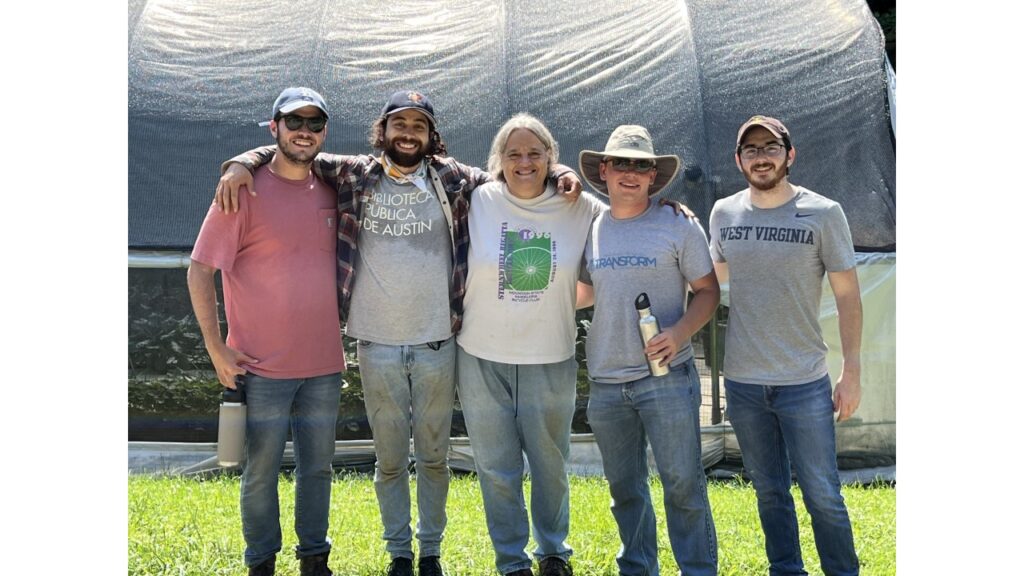
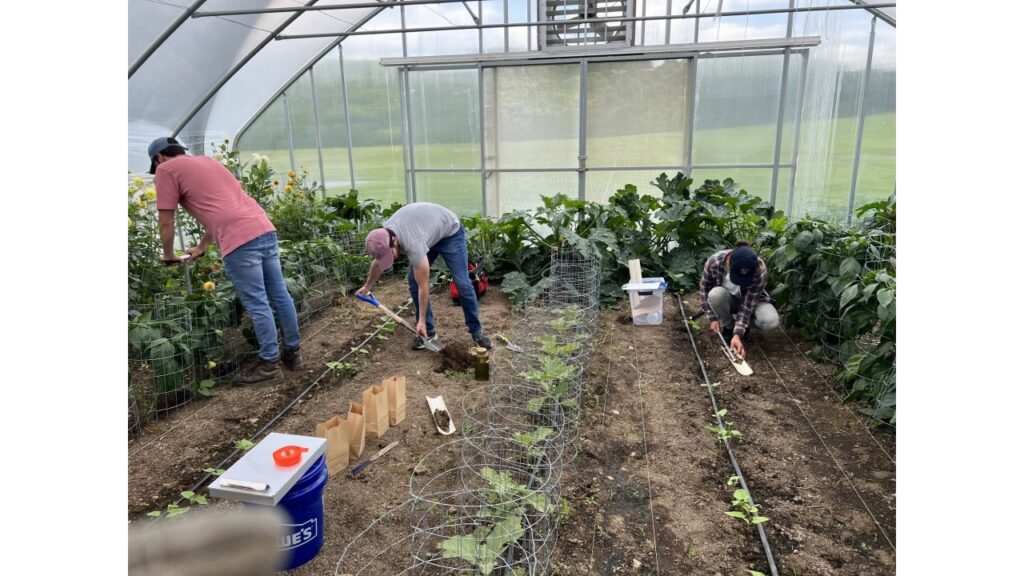
Why this matters:
This insight reflects a common challenge—farmers are willing to test their soils, but they need clear, actionable interpretation tools. This feedback informed our conclusion that focusing on aggregation + organic matter + training provides the best balance between affordability and usefulness.
2️. Bridging Science and Practice: A New Soil Health Course
One unexpected success was the official addition of a Soil Health course to the Horticulture and Environmental Soil & Water Sciences curricula at a major university. This course was directly inspired by the research, farmer engagement, and outreach efforts of this project.
“I never thought soil health could be measured in so many ways—this class really made me think about the connections between soil structure, biology, and farming practices.” – Student feedback from the first semester the course was taught (Fall 2024).
Why this matters:
This project didn’t just impact farmers—it also trained the next generation of soil professionals, extension agents, and conservationists. The integration of real-world project data into university education ensures that these principles will continue shaping agricultural decisions for years to come.
3️. Engaging Extension Agents & Expanding Reach
Through direct engagement at meetings and workshops, the project built new collaborations with extension agents, who became crucial partners in farmer recruitment and outreach. At the 2023 ANR Fall Unit Meeting, 15 new farmers were connected to soil health education through extension agent networks.
“Having this kind of training is invaluable—it gives us practical ways to help farmers think about soil beyond just ‘good’ or ‘bad’ and actually measure changes over time.” – Extension agent from West Virginia.
Why this matters:
This reinforces that extension agents are key players in the long-term success of soil health education. Their engagement in this project means soil health concepts will continue reaching farmers beyond the direct participants.
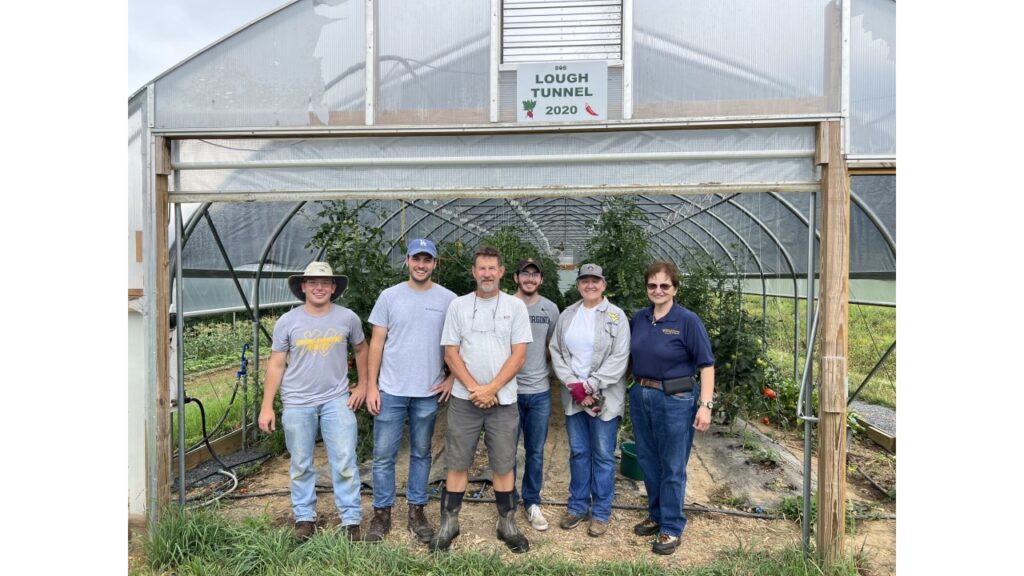
4️. First Soil Health Workshop: A New Annual Tradition?
In December 2024, the project team hosted the First Soil Health Workshop at WVU and WV, bringing together 20 extension agents and 2 farmers for hands-on learning and discussion. The workshop focused on:
Understanding soil health indicators and how to use them for farm management.
Practical demonstrations on soil testing and interpretation.
Discussion of economic feasibility and cost-effective testing approaches.
The response was overwhelmingly positive, with extension agents expressing strong interest in making this an annual event.
“This is exactly the kind of workshop we need every year—it gives us the knowledge to better support our farmers and help them adopt practical soil health practices.” – Extension agent from West Virginia.
Why this matters:
The success of this workshop demonstrates the ongoing demand for soil health education. The interest in making it an annual event suggests that the project’s impact will extend beyond the initial funding period, continuing to benefit farmers and service providers in the years to come.
Years 2022:
We have not collected enough verifiable information to complete this task.
Years 2023:
While the project has made substantial progress, it has encountered challenges that impeded the completion of all planned activities leading to the final product. A key aspect contributing to the project's success lies in the robust research methodologies employed, emphasizing thorough data collection and analysis. The structured educational methods also played a pivotal role in engaging stakeholders and disseminating project insights.
Challenges primarily arose from unforeseen personnel issues and external factors, impacting the timely execution of certain activities. To address this, we would benefit from a extension in our initially accepted timeline. Additionally, enhancing communication channels among project team members and stakeholders could streamline coordination and alleviate potential setbacks.
Years 2024 (Final Report):
Strengths & Successes of the Project Approach
While the project encountered implementation challenges, it successfully achieved key educational and research milestones. Several aspects of the project approach were particularly effective:
- Robust Research & Data Collection Methodology
- The research methods employed ensured high-quality soil health data, allowing for meaningful comparisons and analysis.
- The combination of physical, chemical, and biological soil health indicators provided a comprehensive evaluation, informing future soil health assessment strategies.
- Integration of Education & Research
- The project effectively linked scientific research with real-world application, particularly through workshops, farmer discussions, and extension meetings.
- The establishment of a new Soil Health course in Horticulture and Environmental Soil & Water Sciences will ensure that the knowledge gained continues to be used beyond the life of the grant.
- Collaborations & Partnerships Strengthened Outreach
- Engaging extension agents, university researchers, and industry experts increased the reach and credibility of the project.
- The First Soil Health Workshop at WVU and WV (December 2024) was well-received, with extension agents requesting that it become an annual event, demonstrating strong demand for continued education.

Challenges & Areas for Improvement
- Delayed Laboratory Data & External Factors
- A major obstacle was delays in laboratory analysis, which impacted the project’s ability to verify results on time.
- These delays had a cascading effect, slowing down economic analysis and farmer engagement in soil health testing adoption.
- Lower Than Expected Farmer Adoption
- Despite strong interest and participation in discussions, the number of farmers fully adopting soil health testing and conservation practices was lower than anticipated.
- Feedback indicated that while farmers appreciate soil health testing, the interpretation of biological indicators remains a barrier to adoption.
- Planned Educational Videos Were Not Completed
- Due to time and resource constraints, the planned farmer-focused soil health videos were not developed.
- Future projects should prioritize simple, cost-effective outreach materials (e.g., short demonstration videos or illustrated handouts) to bridge this gap.
Lessons Learned & Future Research Directions
- A More Streamlined, Farmer-Friendly Soil Health Test is Needed
- Through this project, we identified that expensive soil health tests do not necessarily translate into practical, actionable insights for farmers.
- Key Finding: A combination of:
- Rapid Aggregation Test ($5)
- Organic Matter or SOC ($6–10)
- Farmer & Extension Training
provides a cost-effective and scientifically valid approach to assessing soil health. - Future research should further refine and promote this simplified soil health assessment to encourage widespread adoption.
- Addressing the Gap in Biological Soil Health Interpretation
- One of the biggest challenges identified in this project was farmer uncertainty in interpreting biological test results.
- Further research is needed to:
- Develop practical guidelines for integrating biological indicators into farm management.
- Assess how biological test results correlate with actual soil function and yield over time.
- Determine which biological tests (if any) provide the best cost-benefit balance for farmers.
- Strengthening the Economic Case for Soil Health Adoption
- Our preliminary findings indicate that farmers are interested in soil health testing, but economic uncertainty remains a major barrier to adoption.
- Future research should focus on:
- Long-term cost-benefit analysis of soil health management practices.
- Developing farmer-friendly economic tools to estimate ROI on soil health improvements.
- Understanding how different conservation incentives and market trends impact adoption.
- Expanding Farmer Outreach & Education
- The strong positive response to our workshops indicates a growing need for continued soil health education.
- Future research and outreach should include:
- Scaling up the Soil Health Workshop series into an annual event, with expanded participation.
- Developing accessible, farmer-focused educational materials (e.g., video demonstrations, illustrated guides).
- Testing different extension models to determine the most effective ways to reach diverse farmer populations.
Future Research & Next Steps
While this project has made substantial progress in soil health assessment, farmer engagement, and economic analysis, it has also revealed critical areas that require further research and outreach efforts. The insights gained from this work have laid a strong foundation, but many questions remain unanswered, and additional work is needed to refine and expand these findings.
Key Areas for Future Research:
1️. Further validation of cost-effective soil health testing strategies across different soil types and climates.
2️. Development of practical tools for interpreting biological soil health indicators.
3️. Expanded economic analysis of soil health adoption, including long-term financial benefits for farmers.
4️. Continued collaboration with extension agents and farmers to increase outreach and adoption.
5️. Scaling up the successful Soil Health Workshop model to make it a permanent, recurring event.
Reflections: Research Is Ongoing, Not Complete
This project has provided important new insights, but it represents just the beginning of a broader effort to improve soil health assessment, farmer adoption, and economic viability.
Moving forward, we plan to:
- Pursue additional funding to expand our research and outreach.
- Continue collaborations with extension agents, universities, and industry partners to refine soil health management strategies.
- Build on the momentum of this project to ensure that soil health testing becomes an accessible, actionable tool for farmers across the Appalachian region and beyond.
Our work has highlighted the need for ongoing investment in soil health research and education. With continued support, we can further refine testing approaches, strengthen farmer adoption, and contribute to more sustainable land management practices.
Information Products
- Can Super Sniffers Diagnose Tree Decay in a Historic Cemetery?
- SARE SURVEY LNE21-420
- Soil Health – It’s Not All Microbiology
- How Much Margin is Left for Degrading Agricultural Soils? The Coming Soil Crises
- Soil health – It’s not all biology
- The Soil Health Effect on your Garden’s Sustainability
- The Effects of Sampling Depth on Soil Health Indicators in High Tunnels of Appalachia
- Soil Health in Appalachia - Grasslands and High Tunnels
- Soil Health in the Appalachian Region: Relationships between Plant Community, Physical and Chemical Soil Properties
